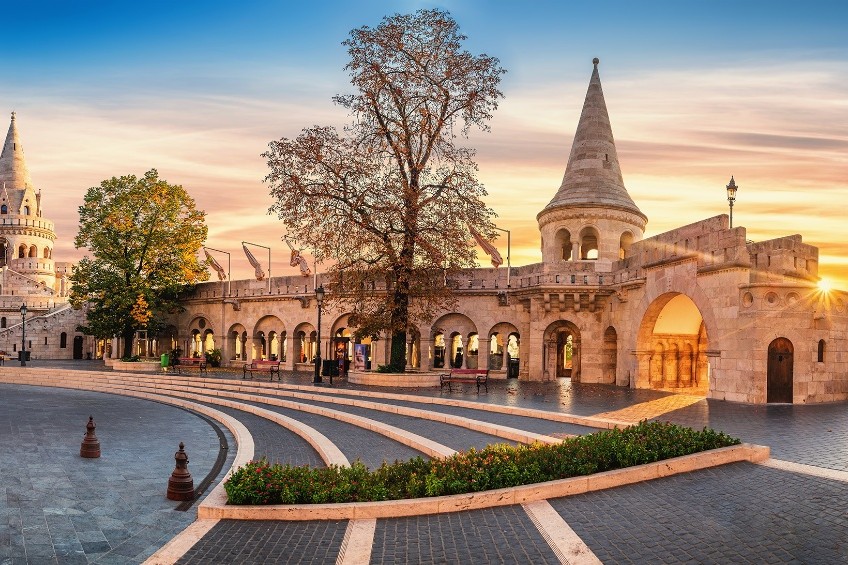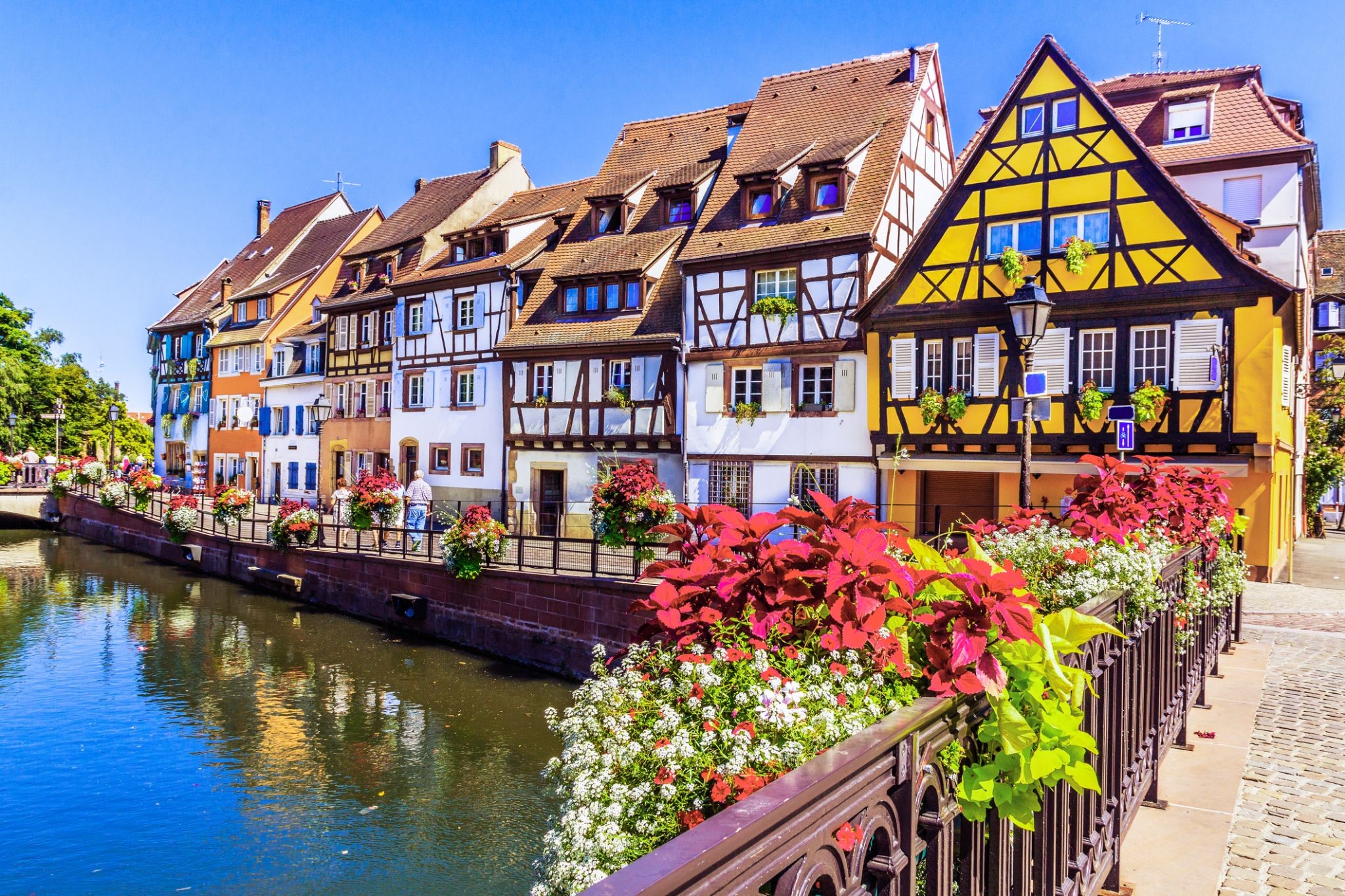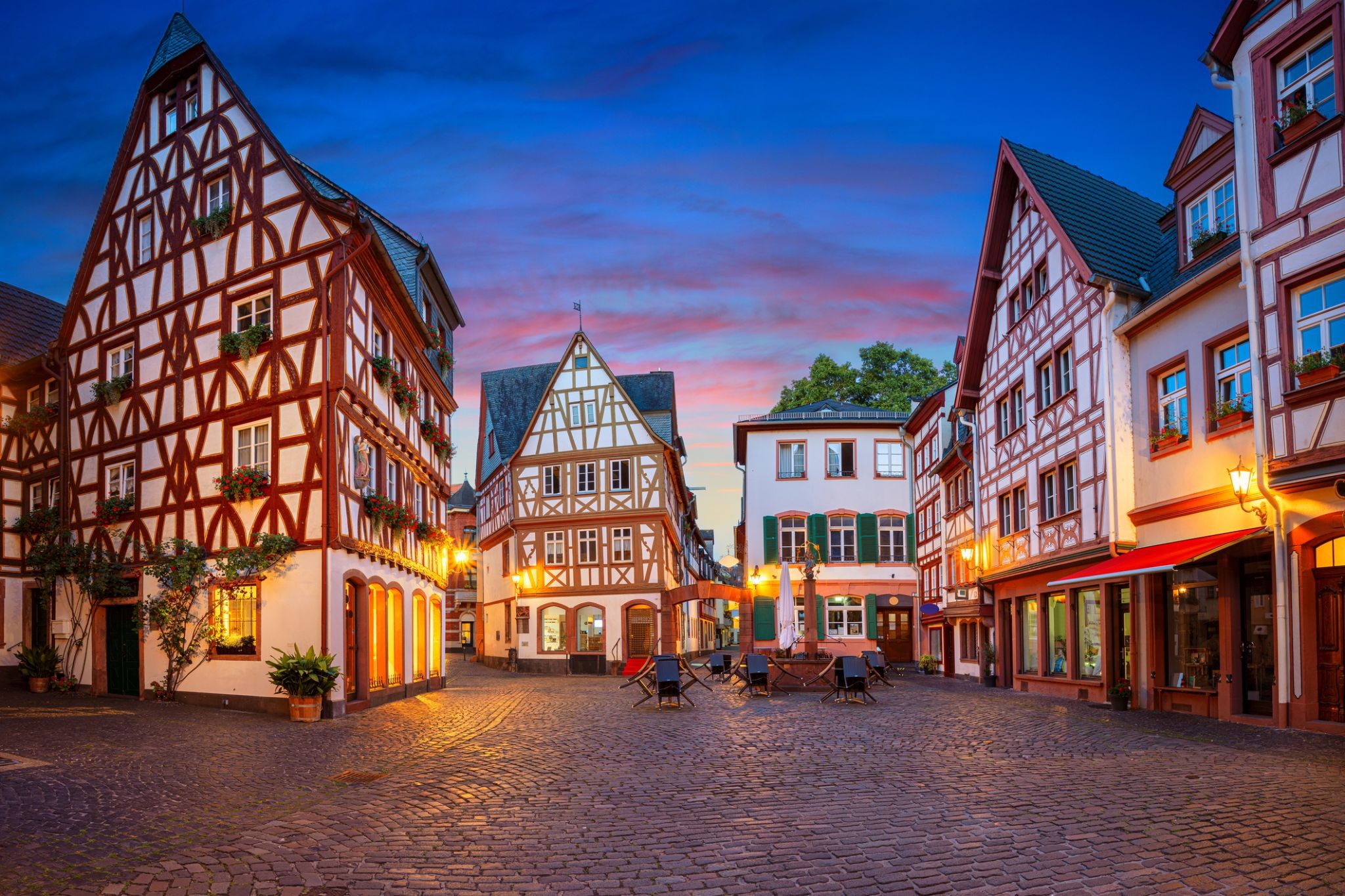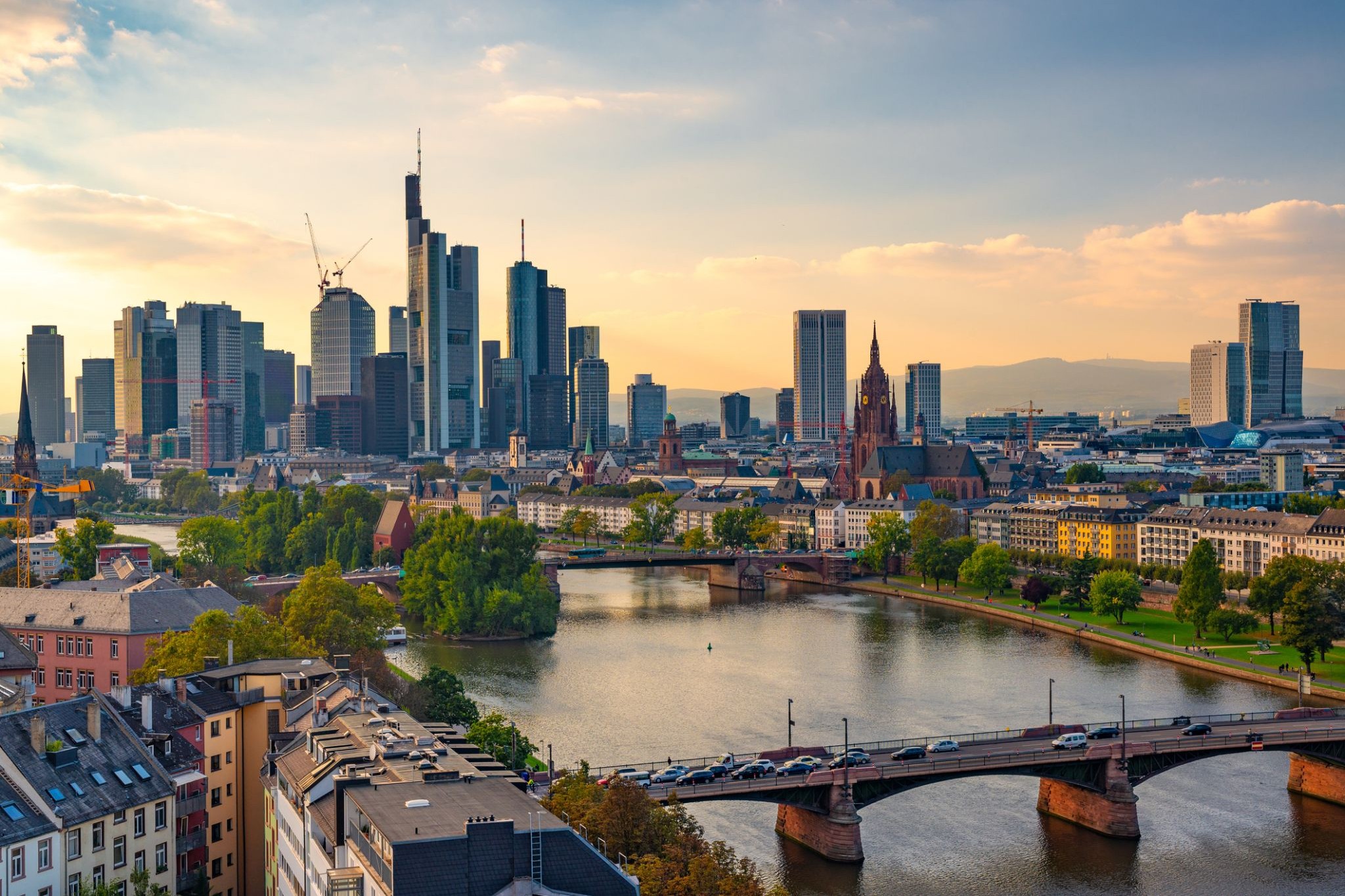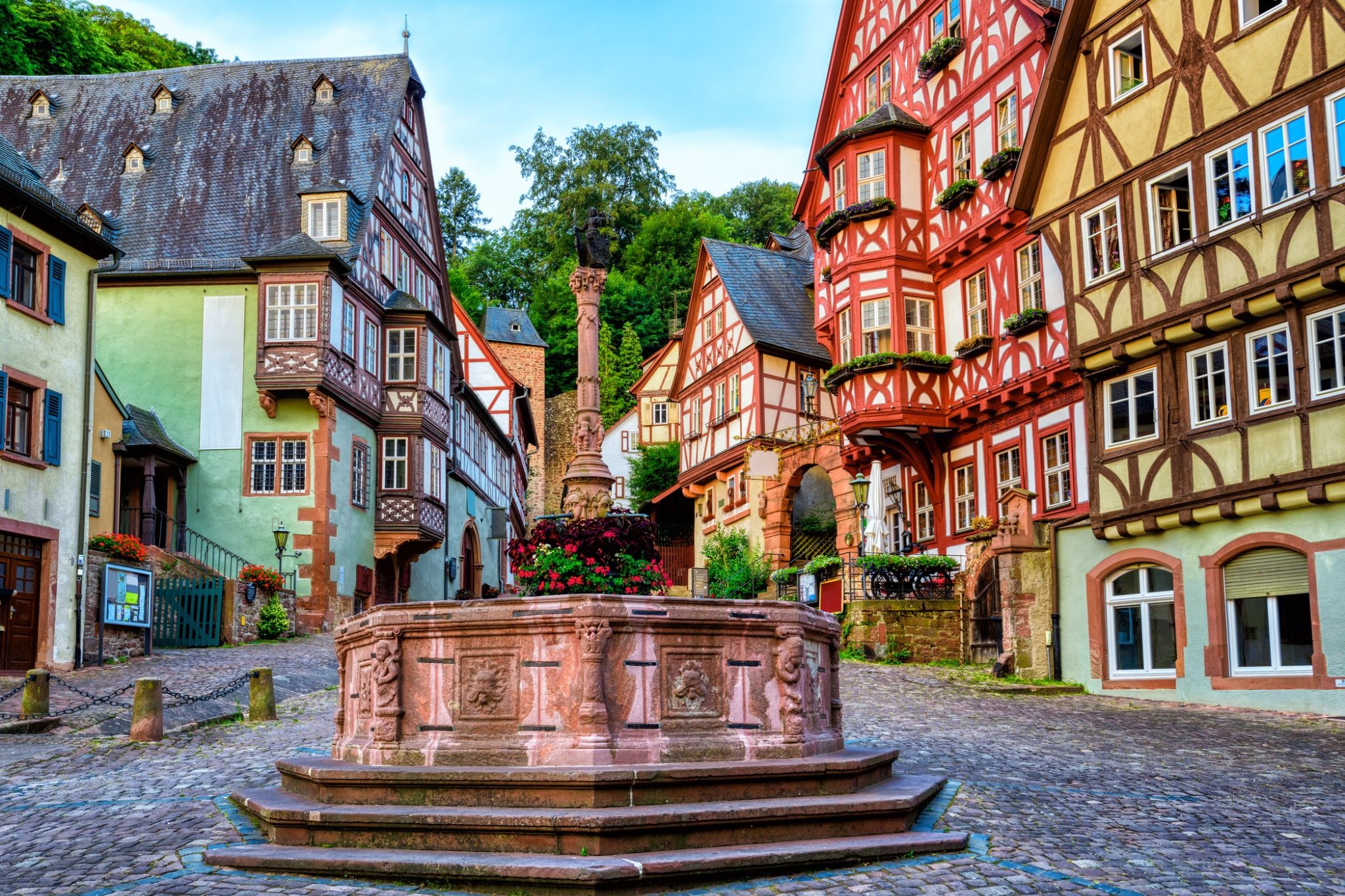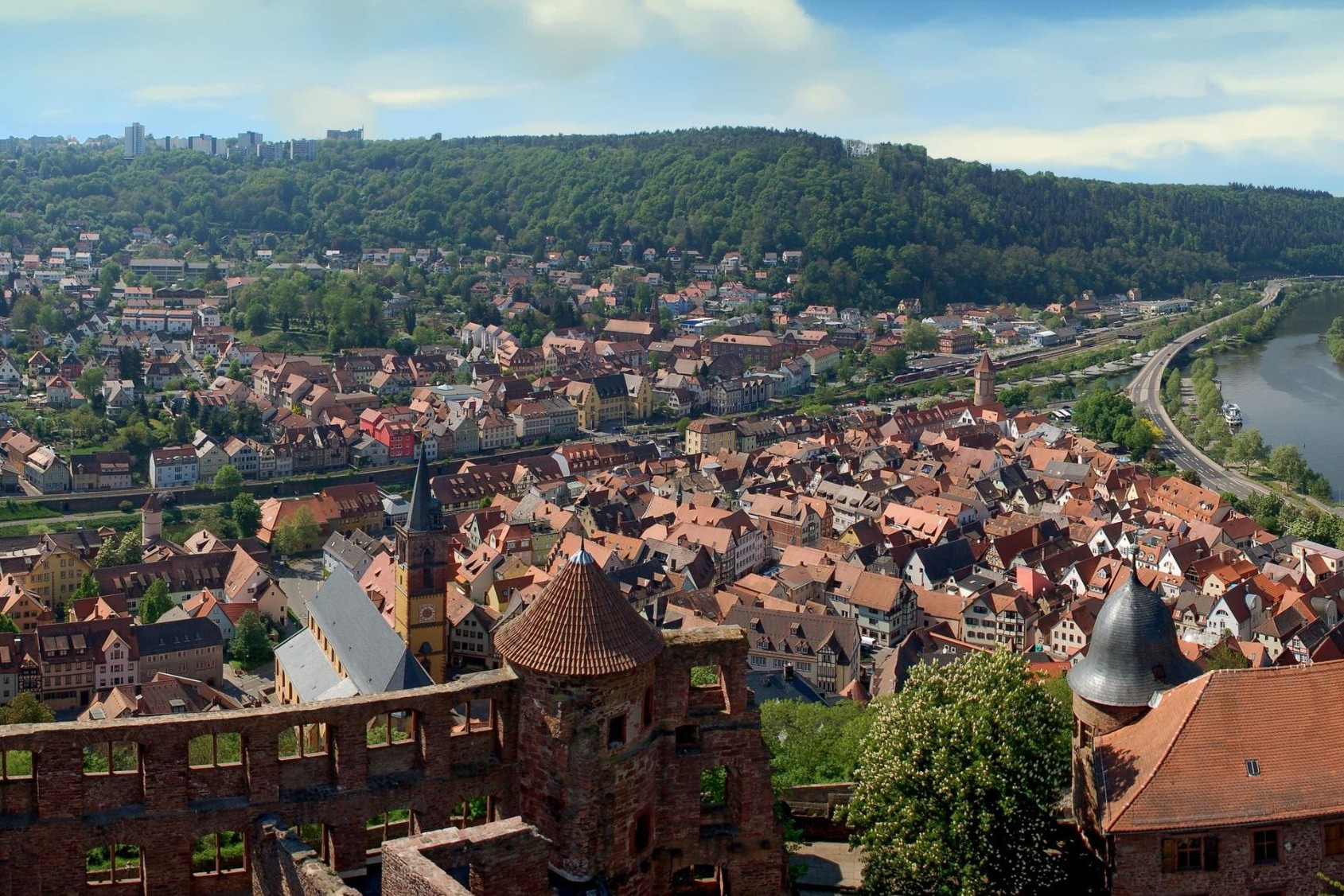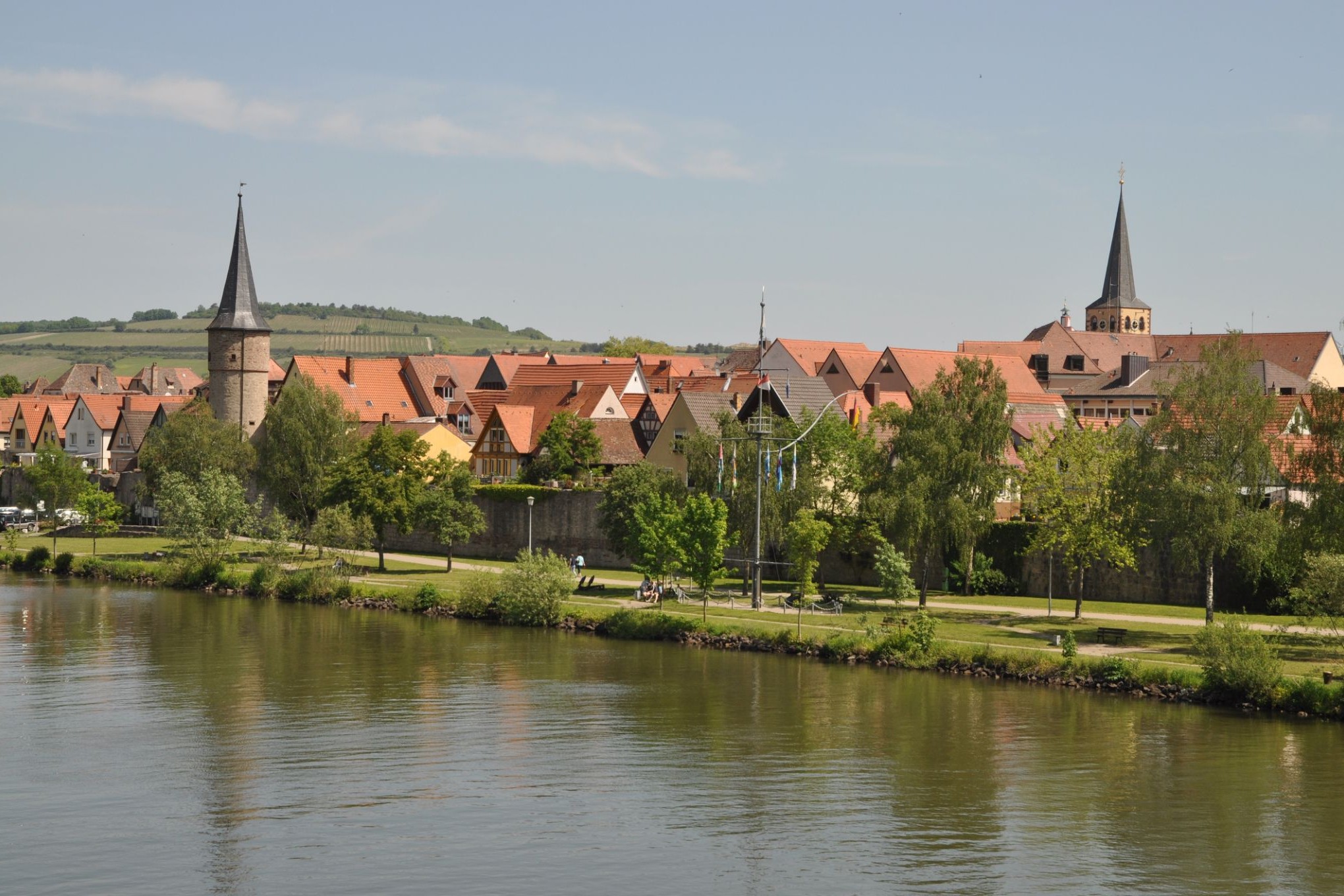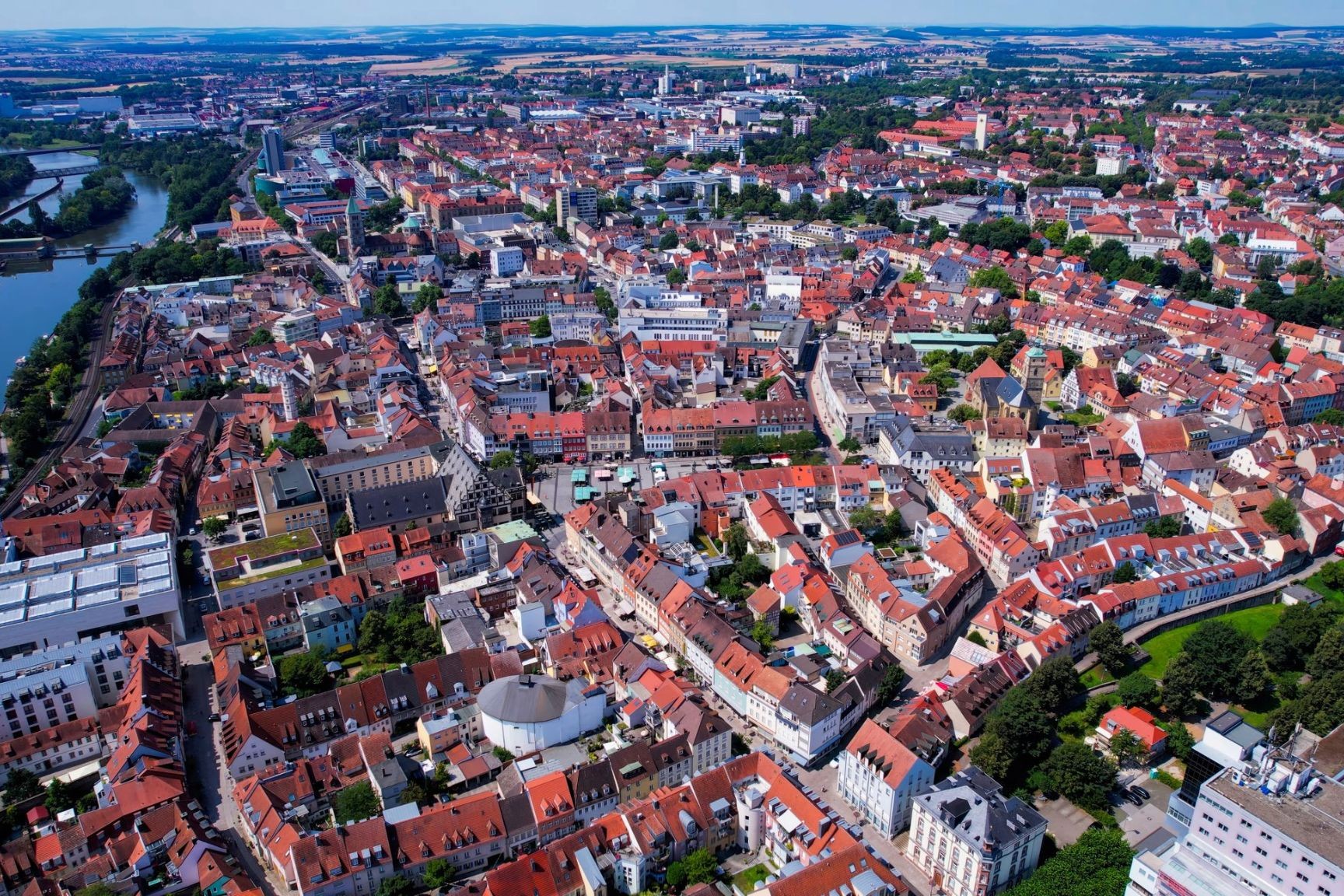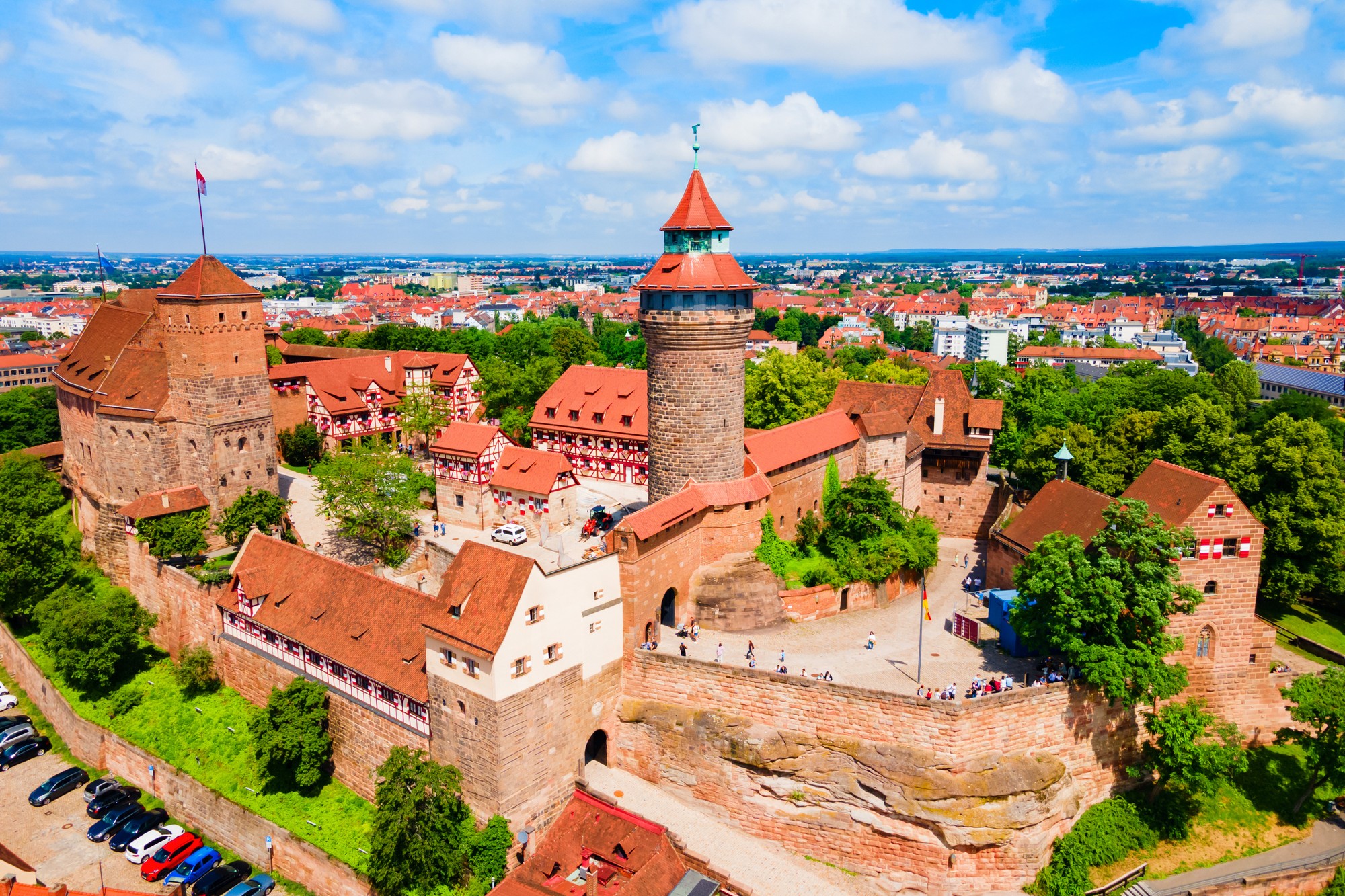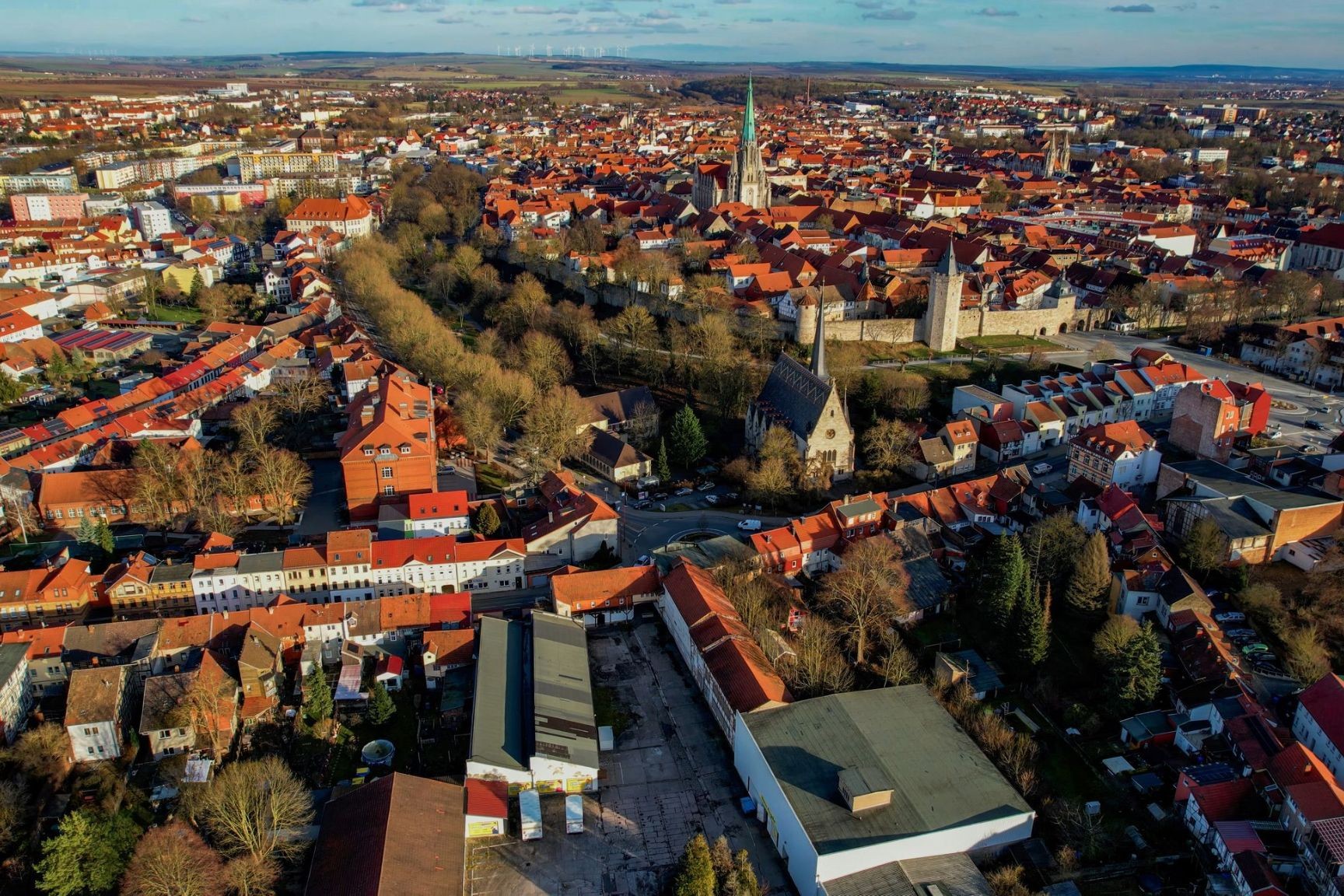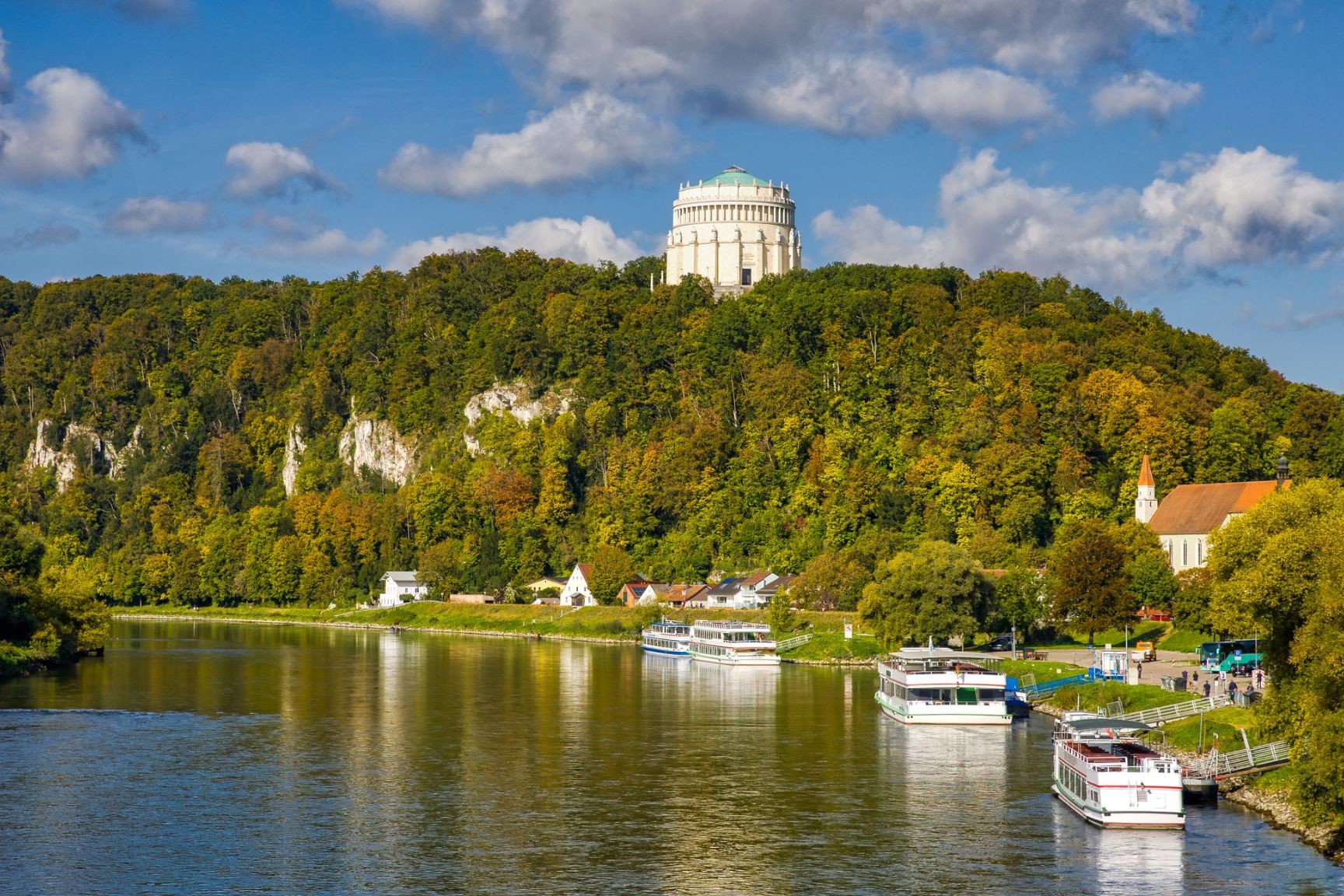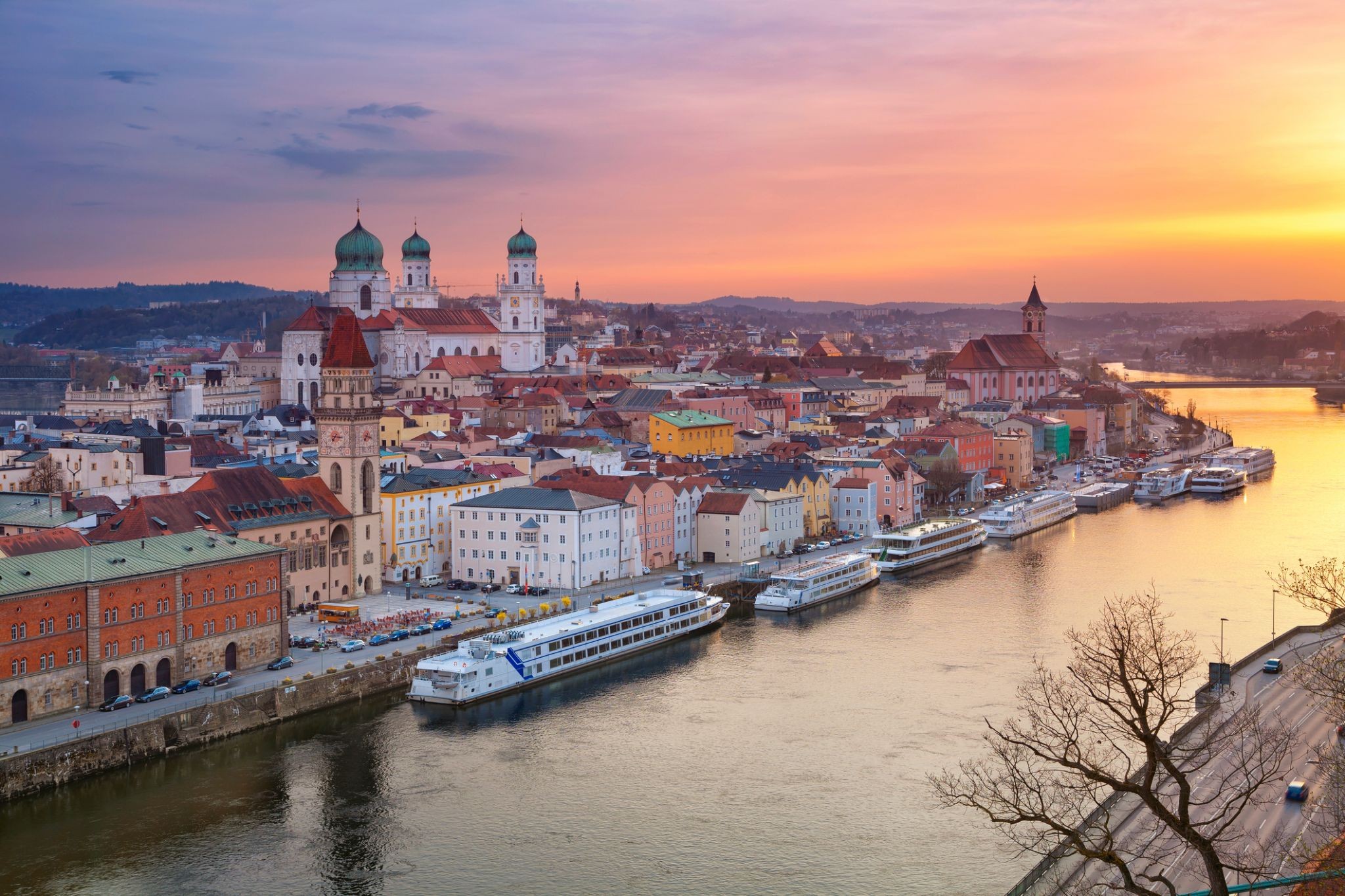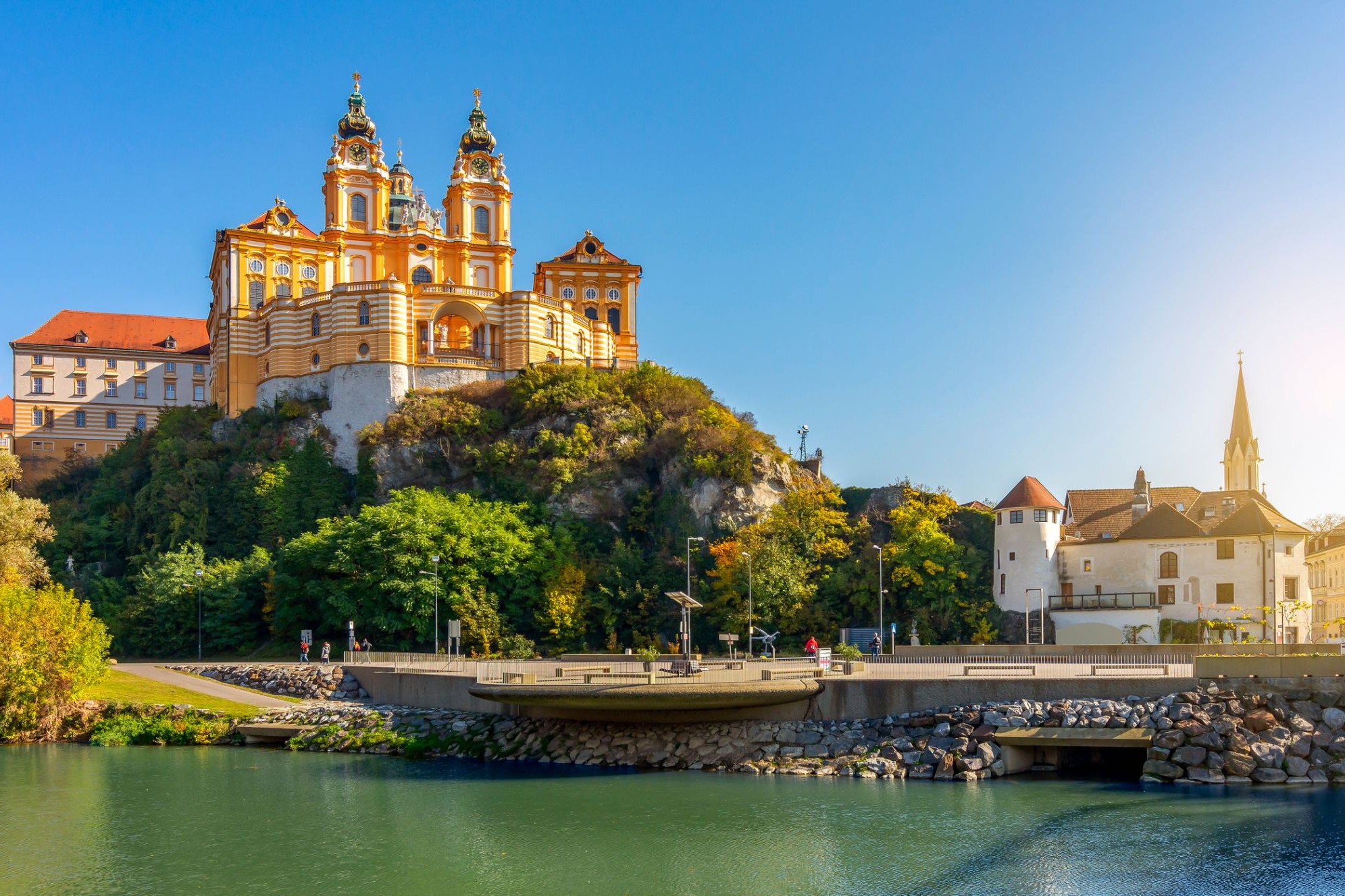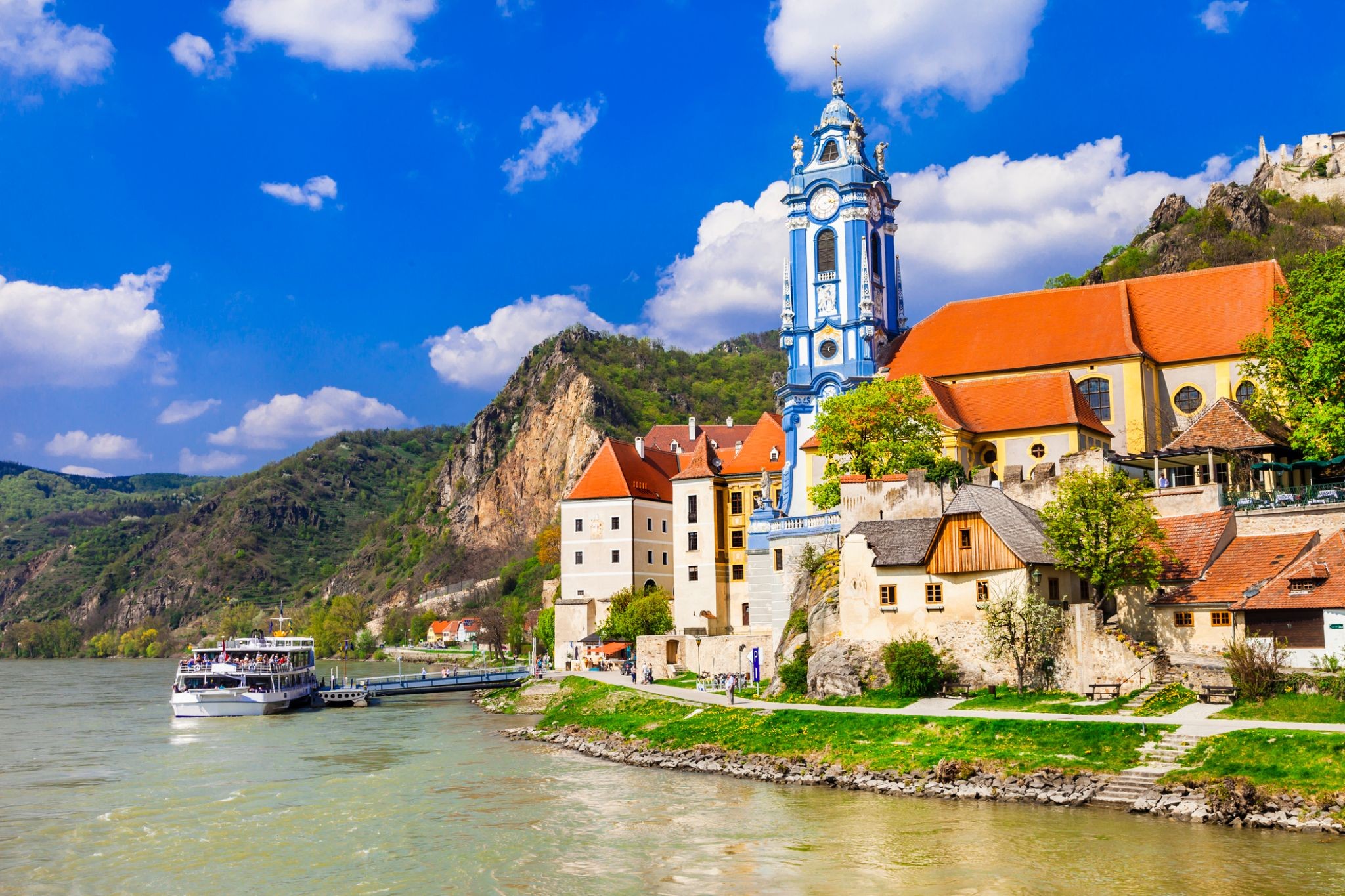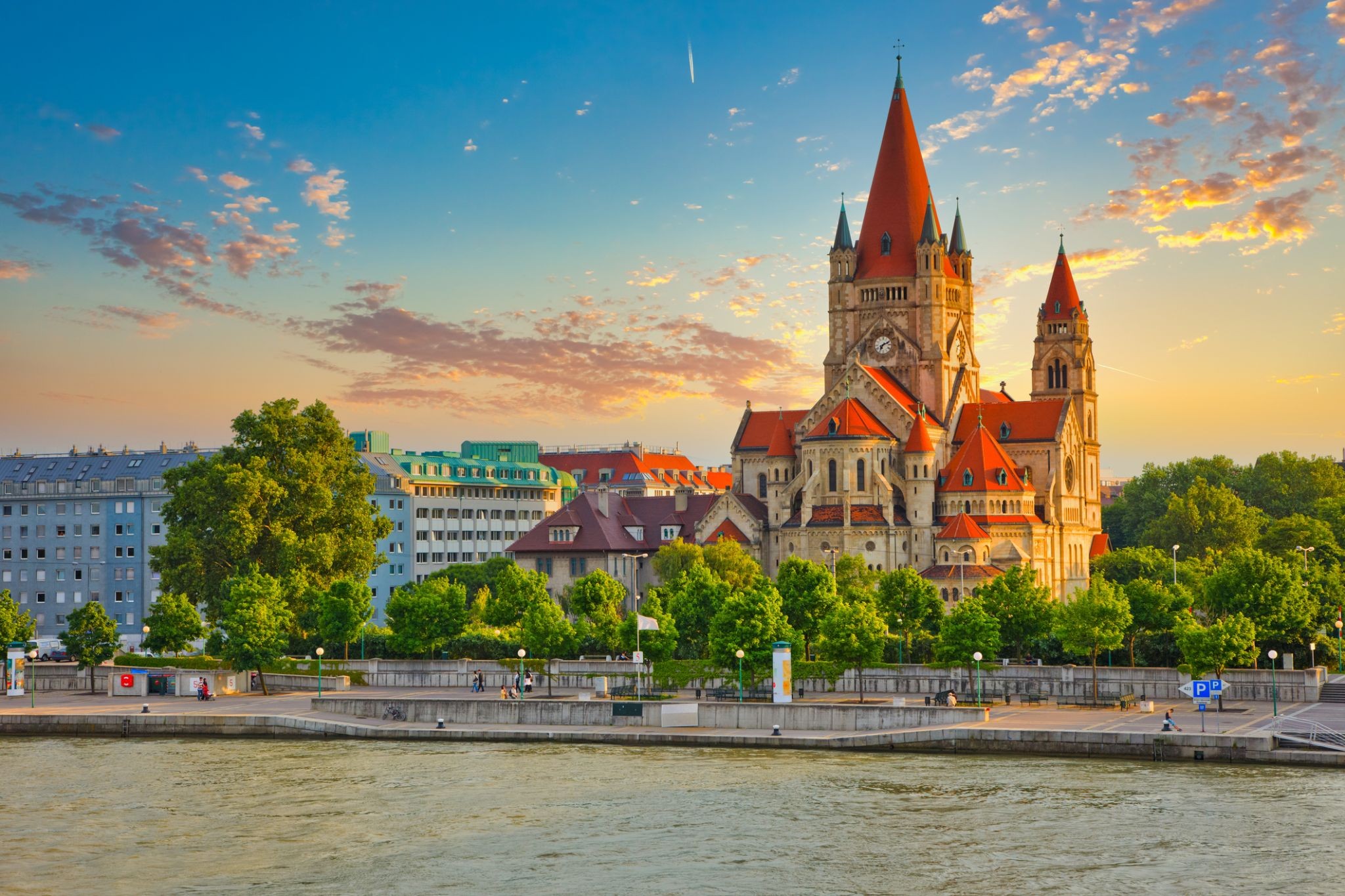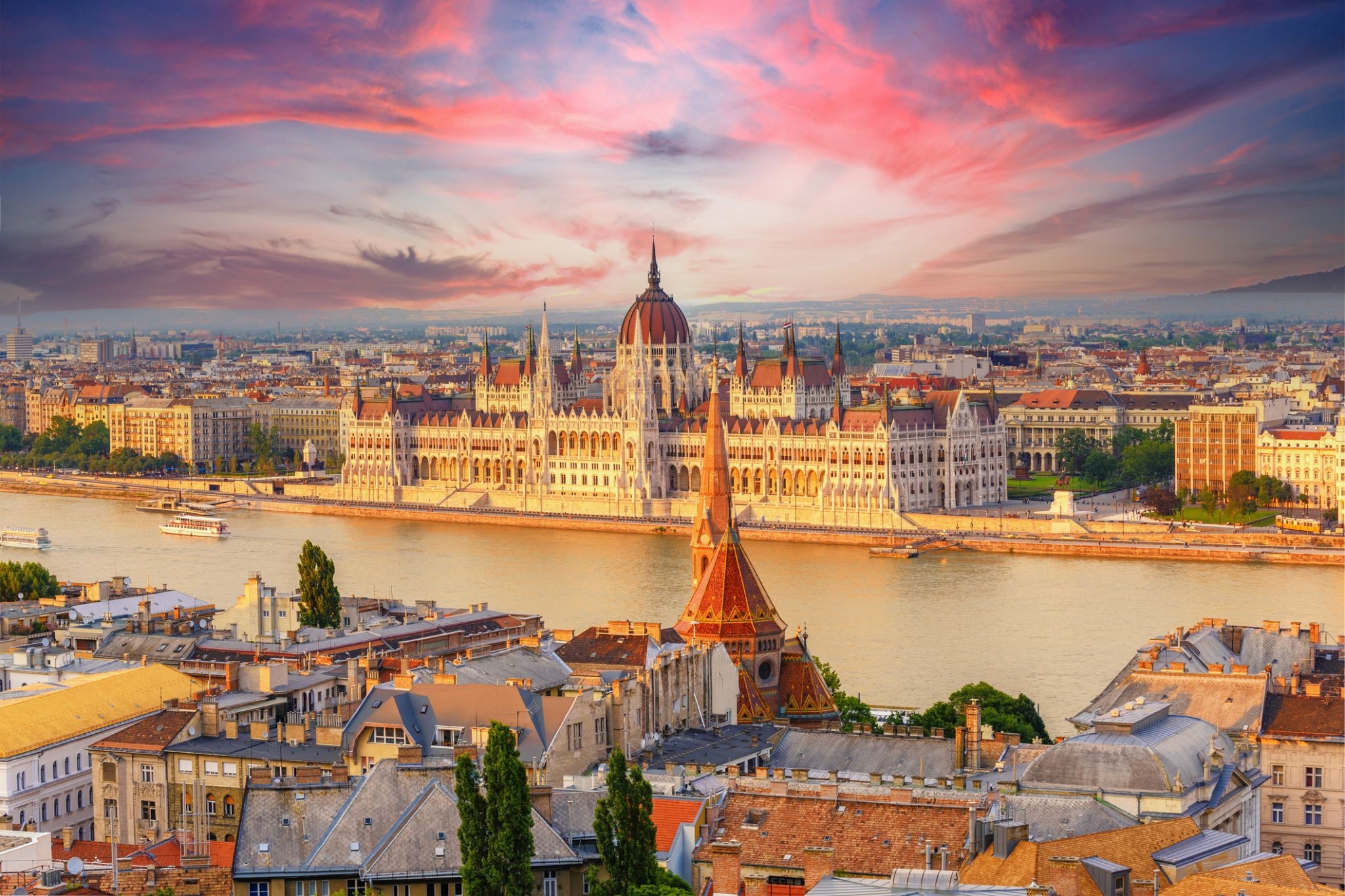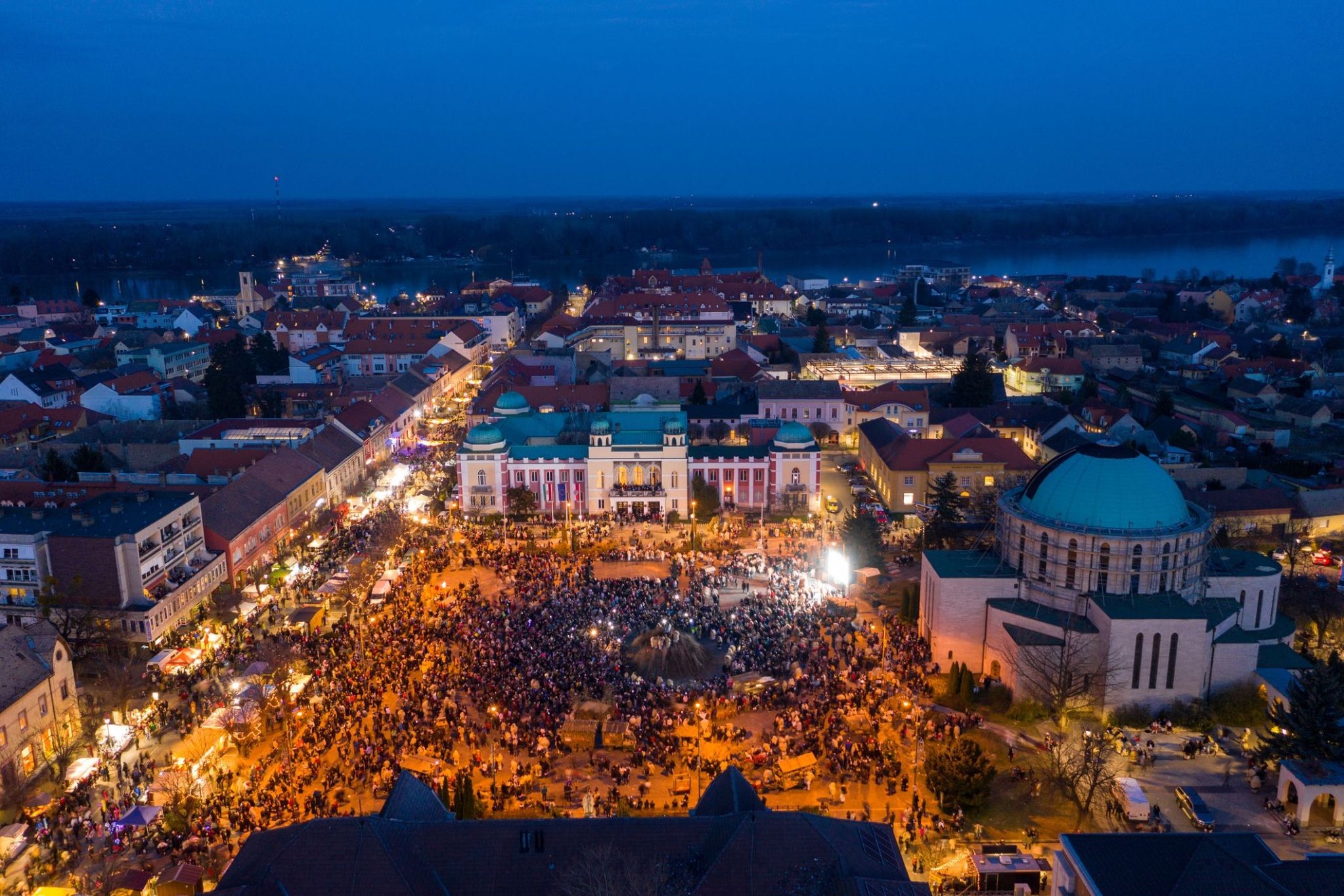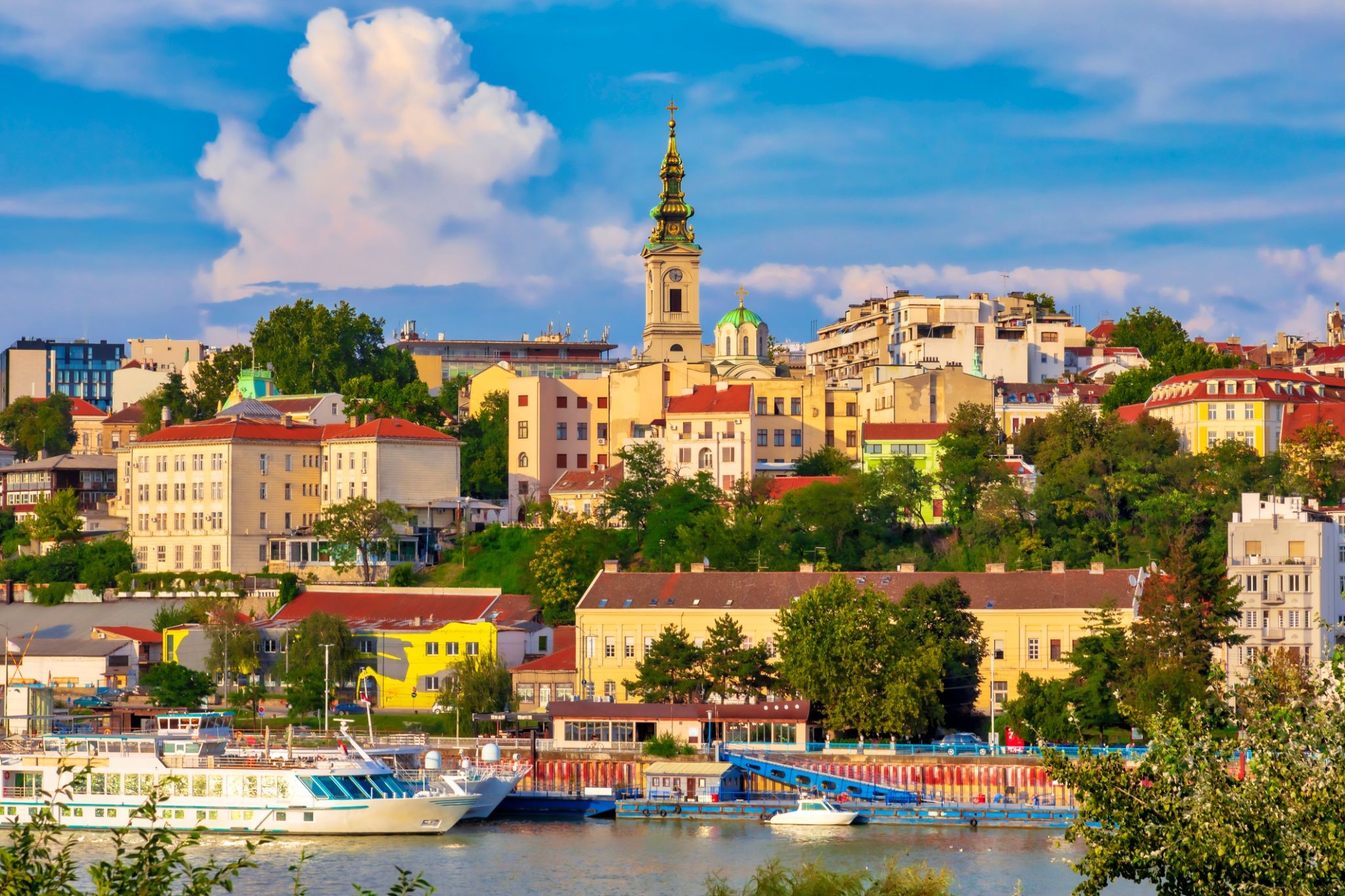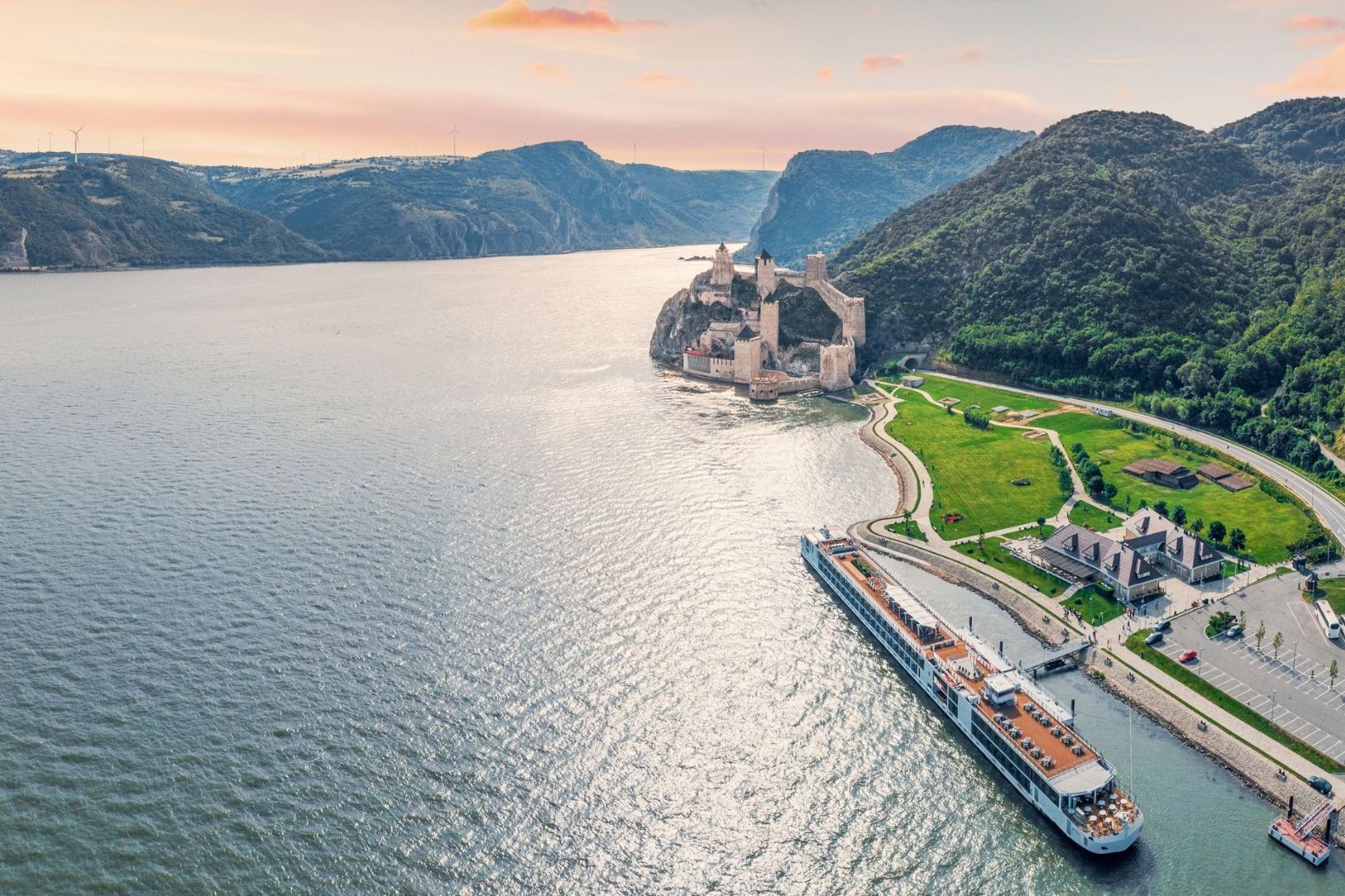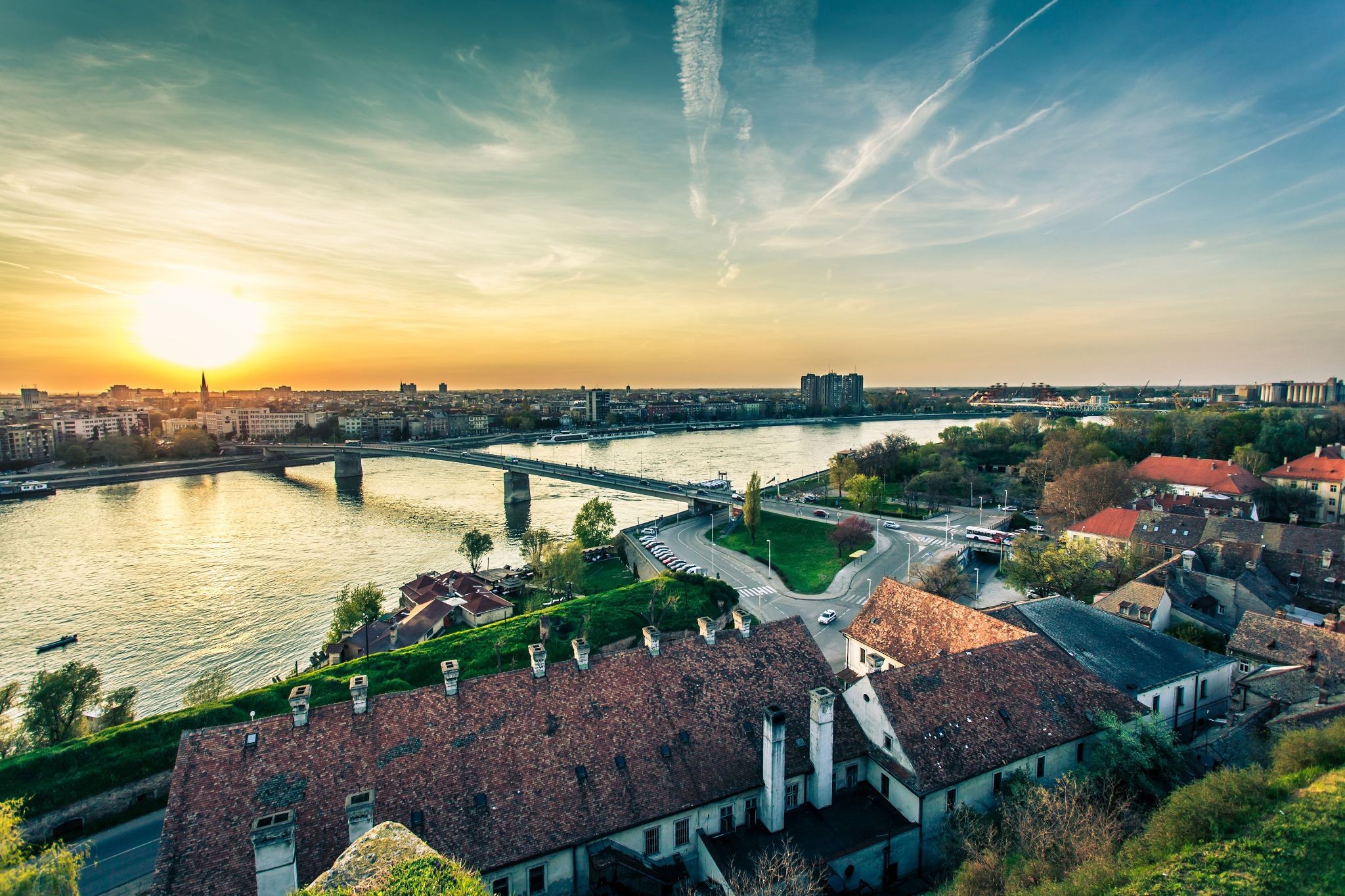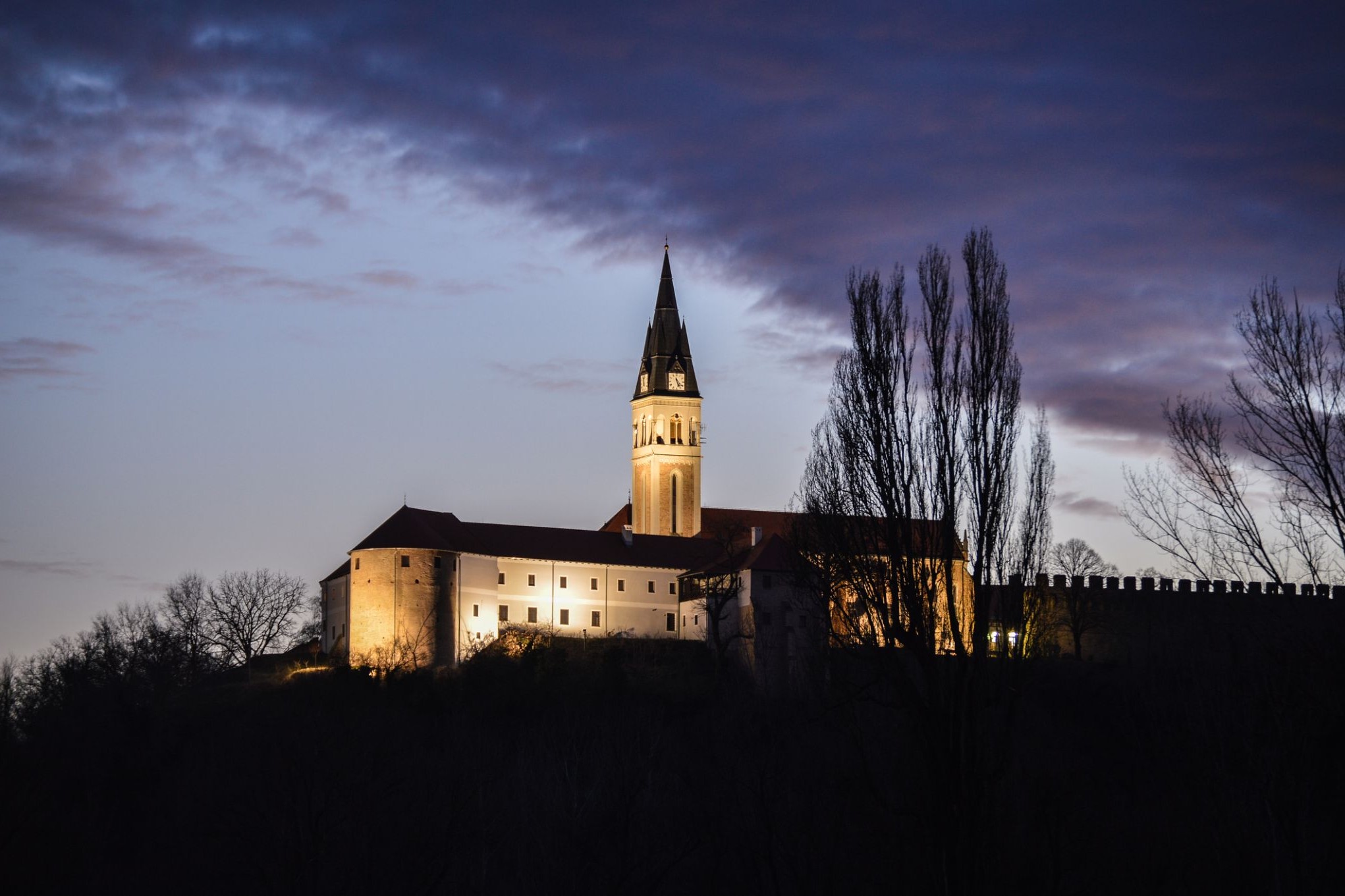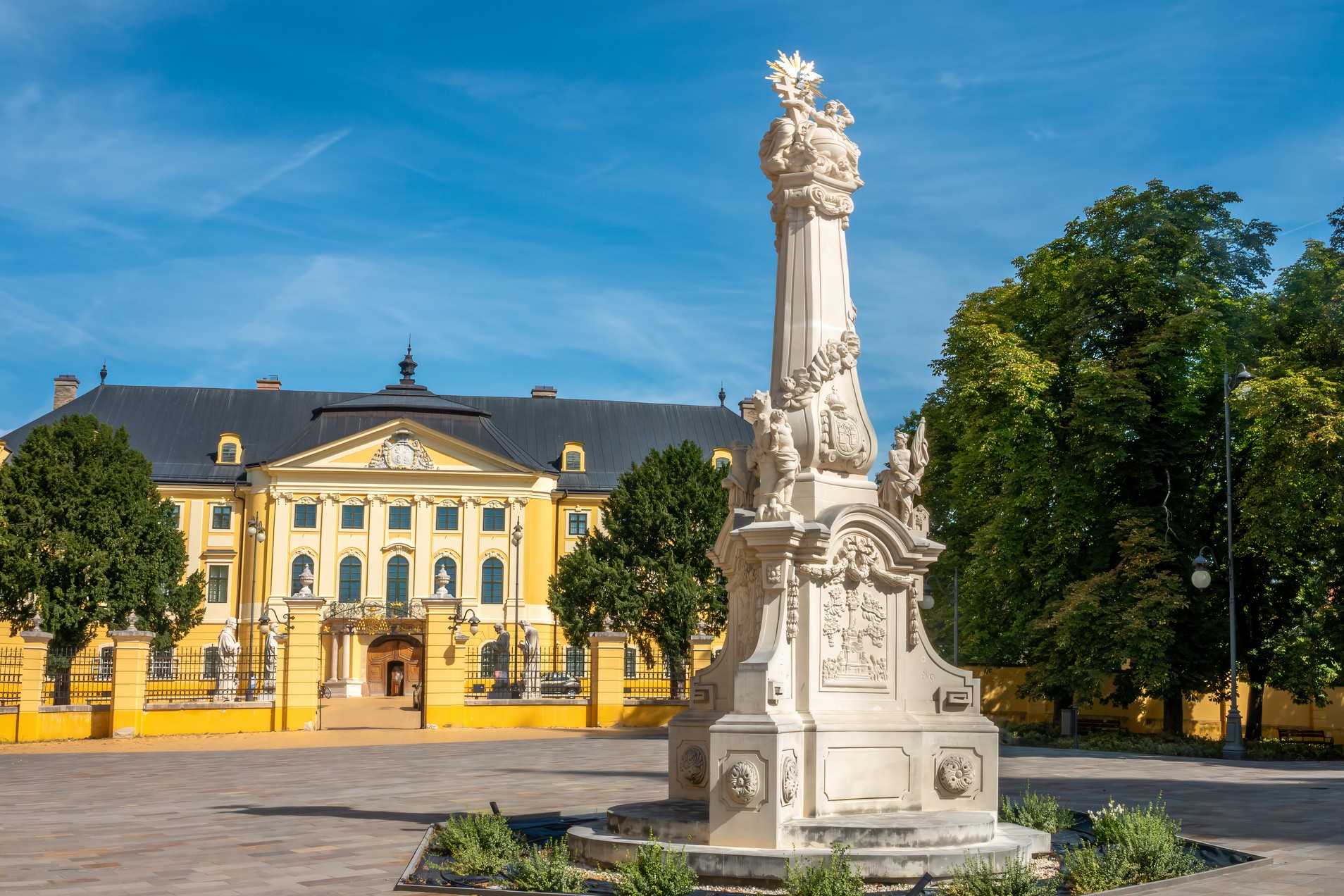Cruise: 30,937,811
Unfortunately this cruise is temporarily unavailable.
Trans-European cruise from Strasbourg to Budapest (port-to-port cruise)
| Cruise Region : Europe |
| Company : Croisi Europe |
| Ship : MS Modigliani |
| Journey Start : Wed 10 Jun 2026 |
| Journey End : Mon 29 Jun 2026 |
| Count Nights : 19 nights |
Schedule
| Day | Date | Port | Arrival | Departure |
|---|---|---|---|---|
| 1 | 10.06 Wed | Strasbourg / France | 18:00 | 20:00 |
| 2 | 11.06 Thu | Mainz / Germany | 08:00 | 11:00 |
| 2 | 11.06 Thu | Frankfurt am Main / Germany | 15:00 | 21:00 |
| 3 | 12.06 Fri | Miltenberg / Germany | 08:00 | 12:00 |
| 3 | 12.06 Fri | Wertheim am Main / Germany | 16:00 | |
| 4 | 13.06 Sat | Wertheim am Main / Germany | 04:30 | |
| 4 | 13.06 Sat | Karlstadt / Germany | 13:00 | 13:30 |
| 4 | 13.06 Sat | Wurzburg / Germany | 17:00 | 17:30 |
| 5 | 14.06 Sun | Schweinfurt / Germany | 07:00 | 13:00 |
| 5 | 14.06 Sun | Bamberg / Germany | 21:00 | |
| 6 | 15.06 Mon | Bamberg / Germany | 02:00 | |
| 6 | 15.06 Mon | Nuremberg / Germany | 13:00 | 18:00 |
| 6 | 15.06 Mon | Muehlhausen / Germany | 23:00 | |
| 7 | 16.06 Tue | Muehlhausen / Germany | 05:30 | |
| 7 | 16.06 Tue | Kelheim / Germany | 13:00 | 13:30 |
| 7 | 16.06 Tue | Regensburg / Germany | 17:00 | 23:00 |
| 8 | 17.06 Wed | Passau / Germany | 10:00 | 16:00 |
| 9 | 18.06 Thu | Melk / Austria | 06:00 | 12:00 |
| 9 | 18.06 Thu | Dürnstein / Austria | 13:30 | 15:30 |
| 9 | 18.06 Thu | Vienna / Austria | 20:30 | |
| 10 | 19.06 Fri | Vienna / Austria | 18:30 | |
| 11 | 20.06 Sat | Esztergom / Hungary | 06:00 | 12:00 |
| 11 | 20.06 Sat | Budapest / Hungary | 16:00 | |
| 12 | 21.06 Sun | Budapest / Hungary | ||
| 13 | 22.06 Mon | Budapest / Hungary | 19:00 | |
| 14 | 23.06 Tue | Mohacs / Mohach / Hungary | 07:00 | 09:00 |
| 14 | 23.06 Tue | Osijek / Croatia | 14:00 | 20:00 |
| 15 | 24.06 Wed | Belgrade / Serbia | 08:00 | 21:00 |
| 16 | 25.06 Thu | Golubac / Serbia | 13:00 | 17:00 |
| 17 | 26.06 Fri | Novi Sad / Serbia | 08:00 | 13:00 |
| 17 | 26.06 Fri | Ilok / Croatia | 16:00 | 17:00 |
| 17 | 26.06 Fri | Vukovar / Croatia | 19:30 | 20:30 |
| 18 | 27.06 Sat | Mohacs / Mohach / Hungary | 08:00 | 14:00 |
| 18 | 27.06 Sat | Kalocsa / Hungary | 18:00 | 19:00 |
| 19 | 28.06 Sun | Budapest / Hungary | 07:00 | |
| 20 | 29.06 Mon | Budapest / Hungary | 09:00 |
All inclusive on board:
All meals included - DRINKS INCLUDED with meals and at the bar
Refined French cuisine - Gala dinner and evening - Welcome cocktail
Free Wi-Fi onboard
Headsets are included for excursions
Official welcome from the captain and crew
Onboard activities
Travel assistance and repatriation insurance
All port fees included
Additional expenses:
Airfare and transfers to/from the departure and arrival ports
Personal expenses (e.g., souvenirs, extra drinks beyond those included)
Tips for crew and guides (recommended) from €9 per day per guest
Medical insurance (optional, at your own discretion)
Excursions and activities not included in the program
Additional onboard services (spa, massage, laundry, etc.)
PAYMENT AND BOOKING CONDITIONS:
A deposit 30 % is due within 4 days after confirmation if you pay credit card, bank transfer, or personal check. If you pay by credit card, you must sign an authorization form. If paying by wire transfer, the transfer must be received within 8 days after confirmation. Final payment is due at least 90 days prior to departure. Vouchers will be sent by email at 30 days prior to departure and only when full payment has been made. You are considered confirmed when we receive your deposit of 30 % of the price of the cruise, or, if you are confirmed within 90 days before departure, you are confirmed when we receive your full payment. Failure to pay the balance by the 90-day deadline is a default that entitles us to cancel your agreement and retain your deposit if you do not pay within eight days after notice of nonpayment.
CANCELLATION:
1) TRAVELLER’S RIGHT OF CANCELLATION
The traveller may cancel the contract at any time prior to the start of the trip or stay, subject to the payment of appropriate cancellation fees or, where applicable, standard cancellation fees charged by the organiser or retailer, in accordance with Article L. 211-14 I of the French Tourism Code.
2) CANCELLATION COSTS
In the event of cancellation by the customer, and in accordance with Article L 211-14 of the French Tourism Code, the sums paid will be reimbursed minus the cancellation fees per person specified below, depending on the date of cancellation in relation to the departure date, and the non-refundable costs of insurance, reservation fees and visa fees, as well as all other insurance and cancellation fees required by our suppliers. If one of the passengers in a double room or cabin cancels his/her reservation, the remaining passenger will have to pay the double room or cabin supplement for individual use. All cancellations must be sent to the seller by registered mail with acknowledgment of receipt..
Cost of cancelling CroisiEurope river cruises:
• More than 90 days before date of departure: 150 €, not including VAT, in administration fees will be charged per person (fees for themed-weekend and Christmas-market cruises are listed after)
• From 90 to 60 days: 20 % of total amount of cruise package
• From 59 to 30 days: 50 % of total amount of cruise package
• From 29 to 19 days: 60 % of total amount of cruise package
• From 18 to 9 days: 75 % of total amount of cruise package
• 8 days or less before departure: 100 % of total amount of cruise package
For CroisiEurope themed-weekend and Christmas-market river cruises, a cancellation fee of 50 €, not including VAT, will be charged per person at more than 90 days before departure. The fee schedule listed above remains unchanged for these cruises.
Cost of cancelling CroisiEurope seafaring cruises:
• More than 90 days before date of departure: 300 €, not including VAT, in administration fees will be charged per person
• From 90 to 60 days: 40 % of total amount of cruise package
• From 59 to 30 days: 60 % of total amount of cruise package
• From 29 to 9 days: 75 % of total amount of cruise package
• 8 days or less before departure: 100 % of total amount of cruise package
Cancellation terms and conditions above, the cancellation fees for CroisiEurope “New Year’s Eve” river and seafaring cruises are as follows:
• More than 90 days before date of departure: 300 €, not including
VAT, in administration fees will be charged per person
• From 90 to 60 days: 40 % of total amount of cruise package
• From 59 to 30 days: 60 % of total amount of cruise package
• From 29 to 20 days: 75 % of total amount of cruise package
• 19 days or less before departure: 100 % of total amount of cruise package
Cancellation fees for the cruises on the Mekong, Ganges, Nile and in Southern Africa:
• More than 90 days before date of departure: 300 €, not including VAT, in administration fees will be charged per person
• From 90 to 61 days: 35 % of total amount of cruise package
• From 60 to 31 days: 50 % of total amount of cruise package
• From 30 to 20 days: 70 % of total amount of cruise package
• From 19 to 9 days: 80 % of total amount of cruise package
• 8 days or less before departure: 100 % of total amount of cruise package
By accepting these general terms and conditions of sale, the traveller expressly acknowledges that he/she has been previously informed and agrees to the cancellation fees in the manner set out above.
IMPORTANT: All packages including air transport are subject to the general and specific cancellation conditions of the designated airline companies. In the event of cancellation by one or more passengers, the following cancellation conditions shall be applied:
• River, maritime and coastal services: pursuant to the general terms and conditions of CroisiEurope.
• Air transport: terms and conditions of the designated airline company, available on the web sites of the respective airlines or from our booking departments on request.
In addition, the amount of cancellation fees relating to land-based services (hotel, for example) will correspond to the amount of actual fees invoiced by the partner to CroisiEurope.
-
 Day 1: 18:00-20:00
Day 1: 18:00-20:00Strasbourg / France
-
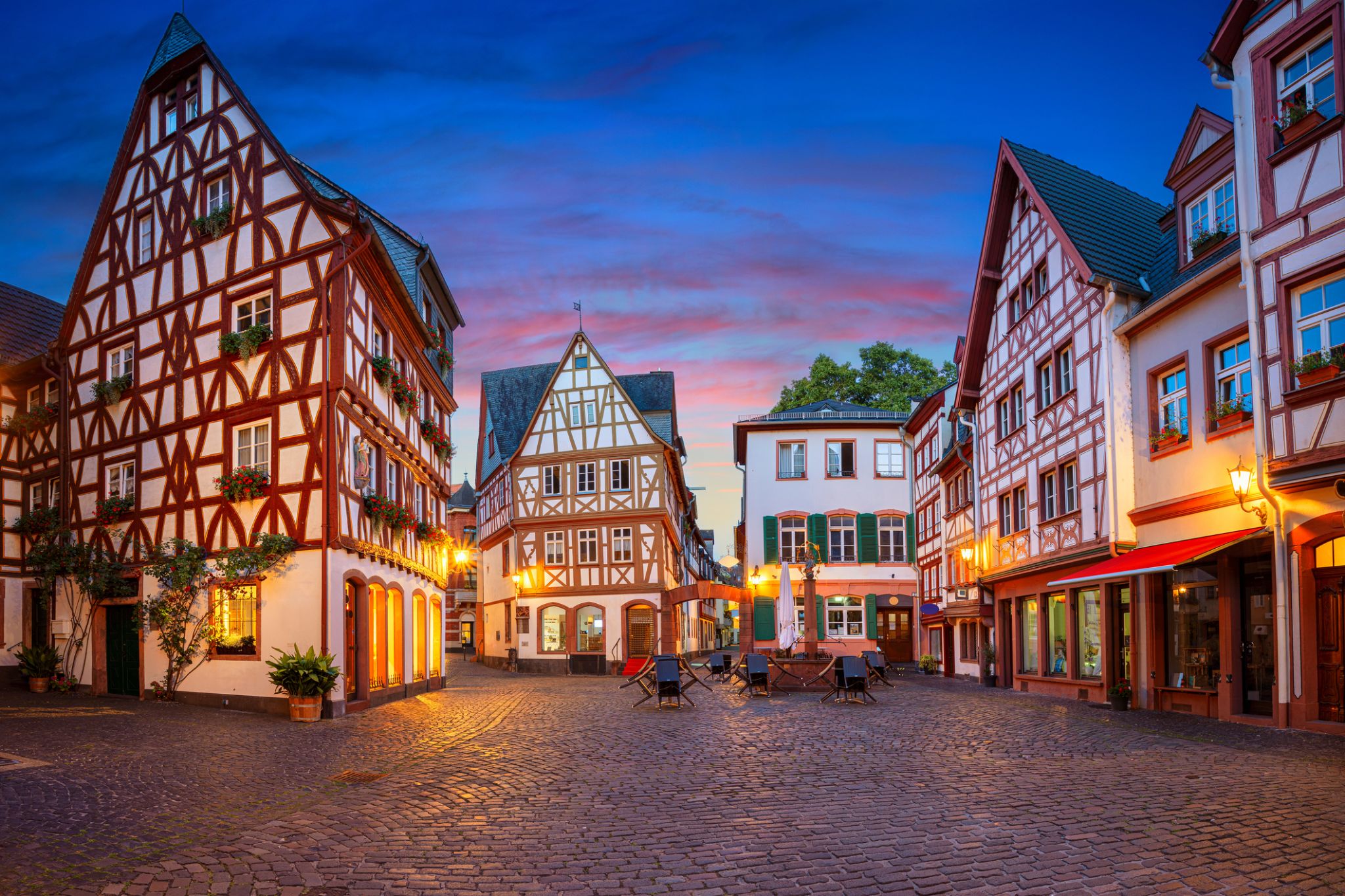 Day 2: 08:00-11:00
Day 2: 08:00-11:00Mainz / Germany
-
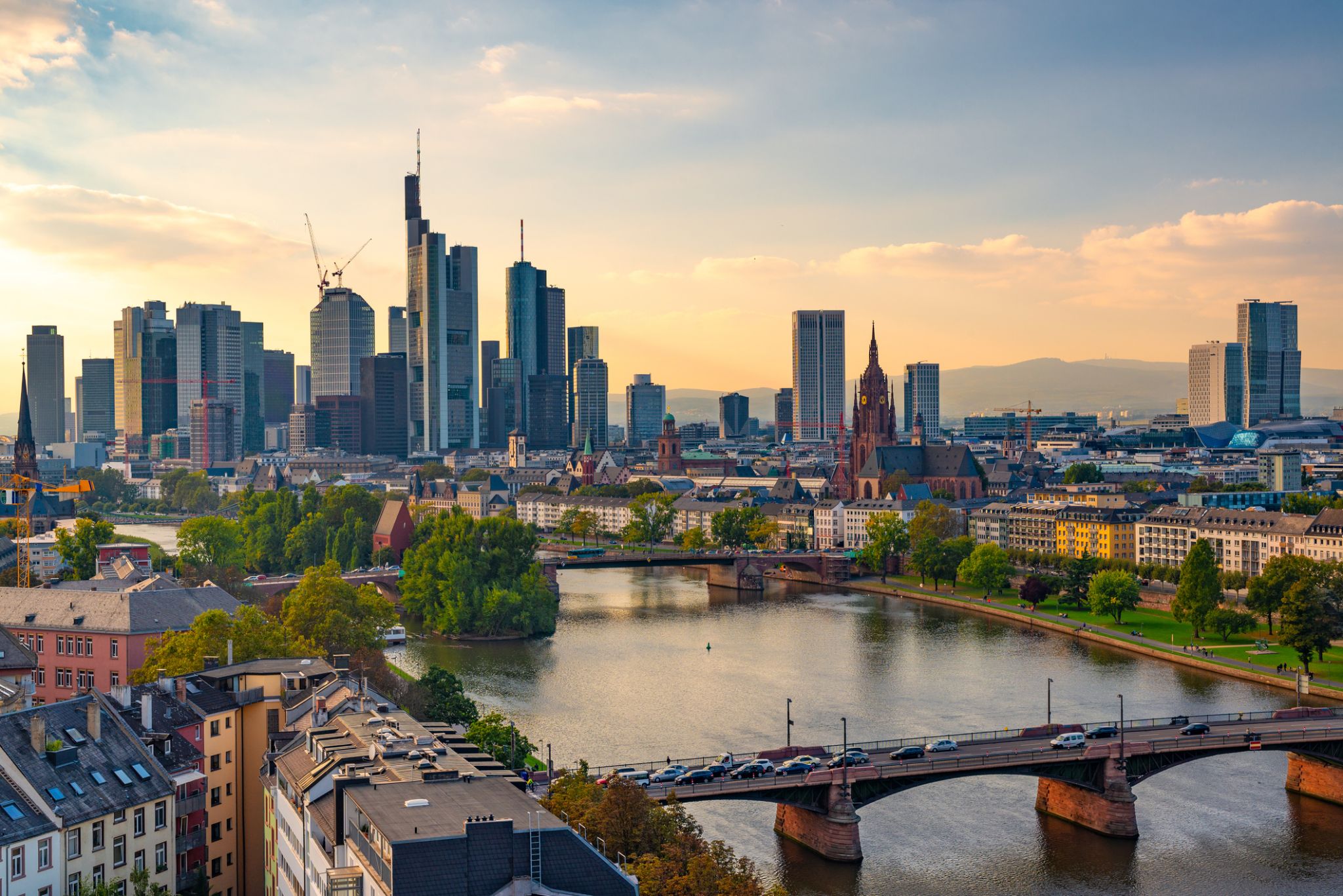 Day 2: 15:00-21:00
Day 2: 15:00-21:00Frankfurt am Main / Germany
-
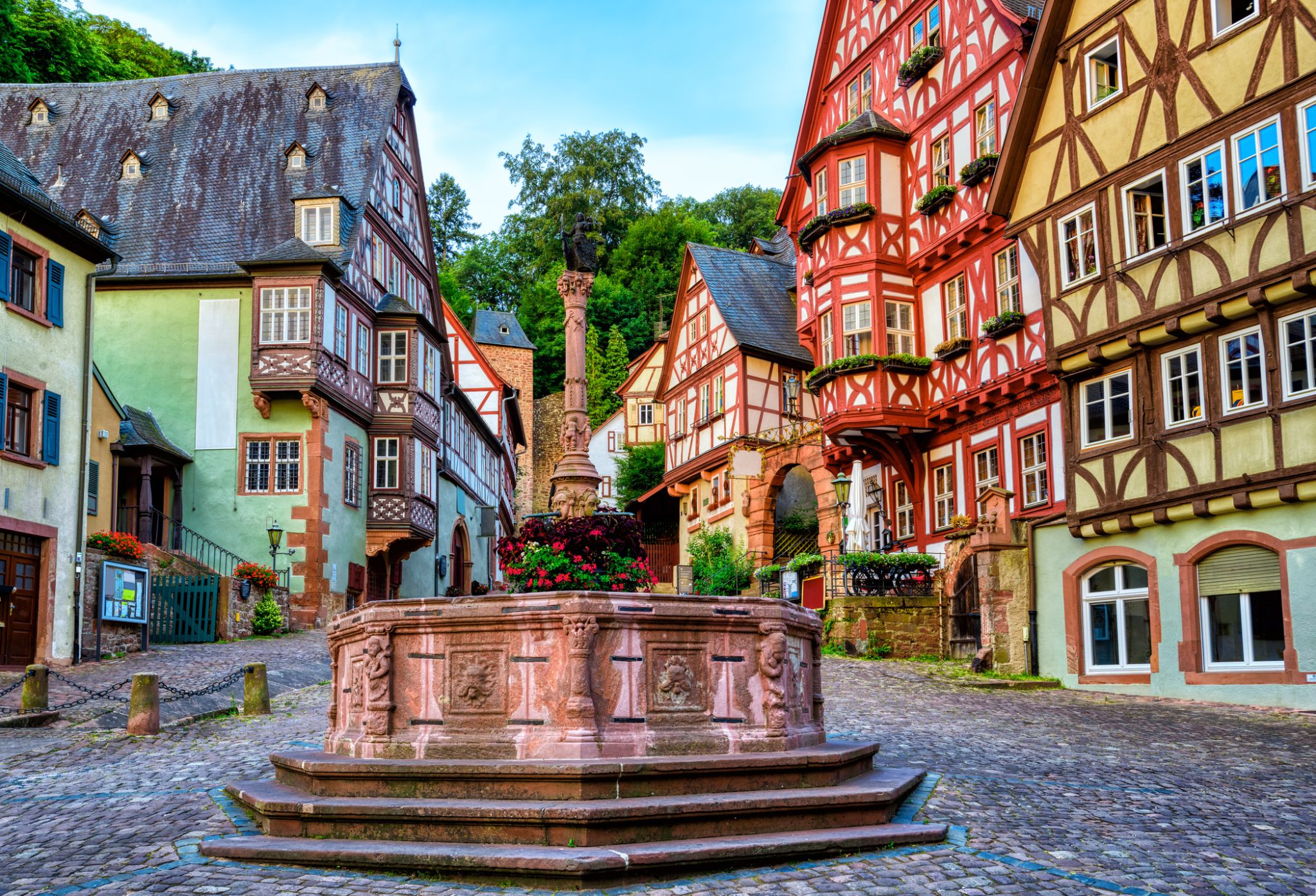 Day 3: 08:00-12:00
Day 3: 08:00-12:00Miltenberg / Germany
-
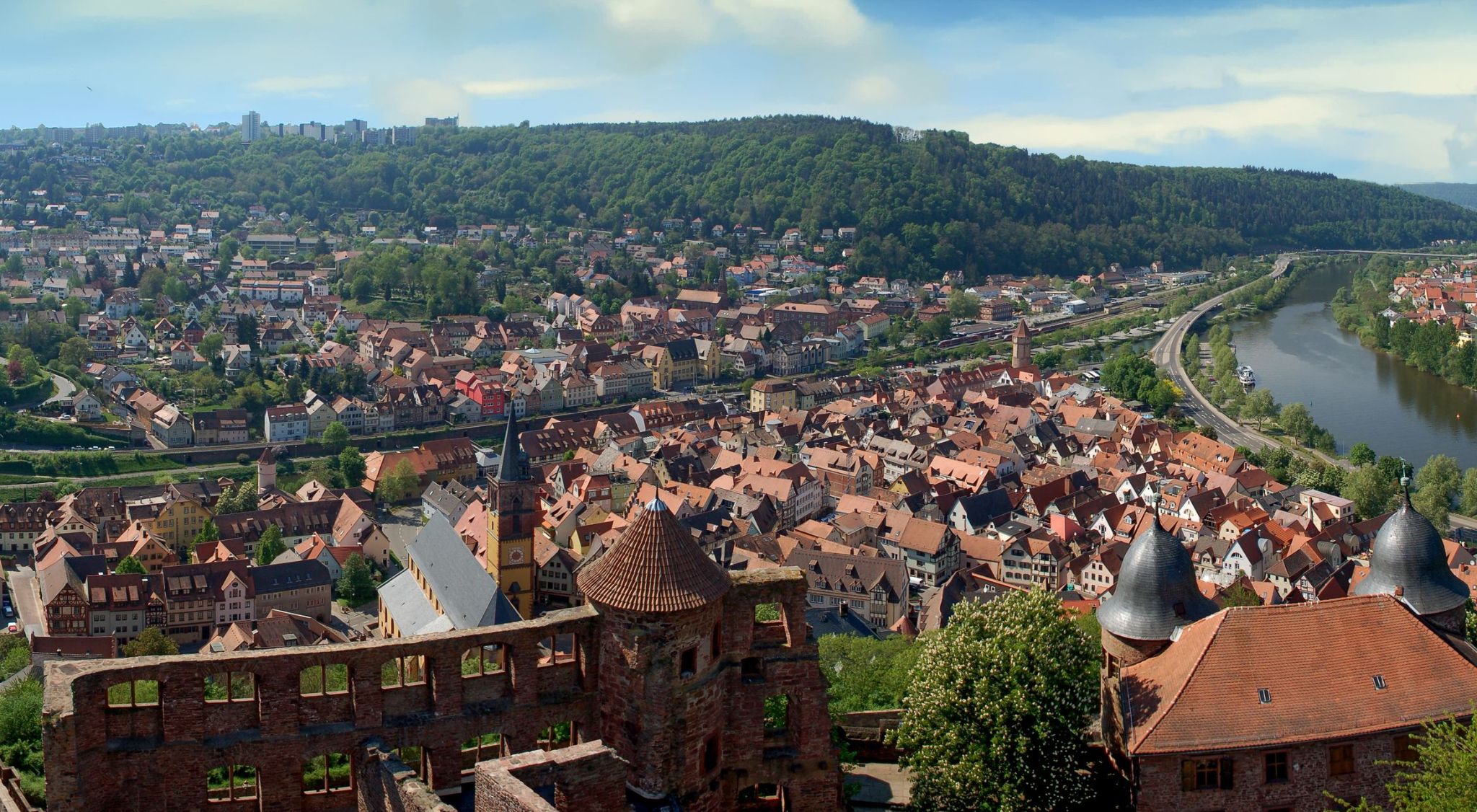 Day 3: 16:00
Day 3: 16:00Wertheim am Main / Germany
Nestled in the heart of the picturesque Main River valley, Wertheim am Main is a city that impresses with its historical charm and natural beauty. In its old town, narrow cobblestone streets, half-timbered houses, and cozy cafes invite you to enjoy a cup of coffee while watching the slow flow of the river. The city is perfect for those seeking harmony between history and nature.
Moreover, Wertheim am Main is famous for its castle, which rises on a hill and offers breathtaking views of the surrounding landscapes. The historic center, known for its crafts traditions, as well as the Glass Museum and the Wertheim Village outlet, make this city an excellent destination for cultural tourism and shopping. Don't miss the chance to explore this charming place, which attracts visitors with its atmosphere of peace and coziness.
-
 Day 4: 04:30
Day 4: 04:30Wertheim am Main / Germany
Nestled in the heart of the picturesque Main River valley, Wertheim am Main is a city that impresses with its historical charm and natural beauty. In its old town, narrow cobblestone streets, half-timbered houses, and cozy cafes invite you to enjoy a cup of coffee while watching the slow flow of the river. The city is perfect for those seeking harmony between history and nature.
Moreover, Wertheim am Main is famous for its castle, which rises on a hill and offers breathtaking views of the surrounding landscapes. The historic center, known for its crafts traditions, as well as the Glass Museum and the Wertheim Village outlet, make this city an excellent destination for cultural tourism and shopping. Don't miss the chance to explore this charming place, which attracts visitors with its atmosphere of peace and coziness.
-
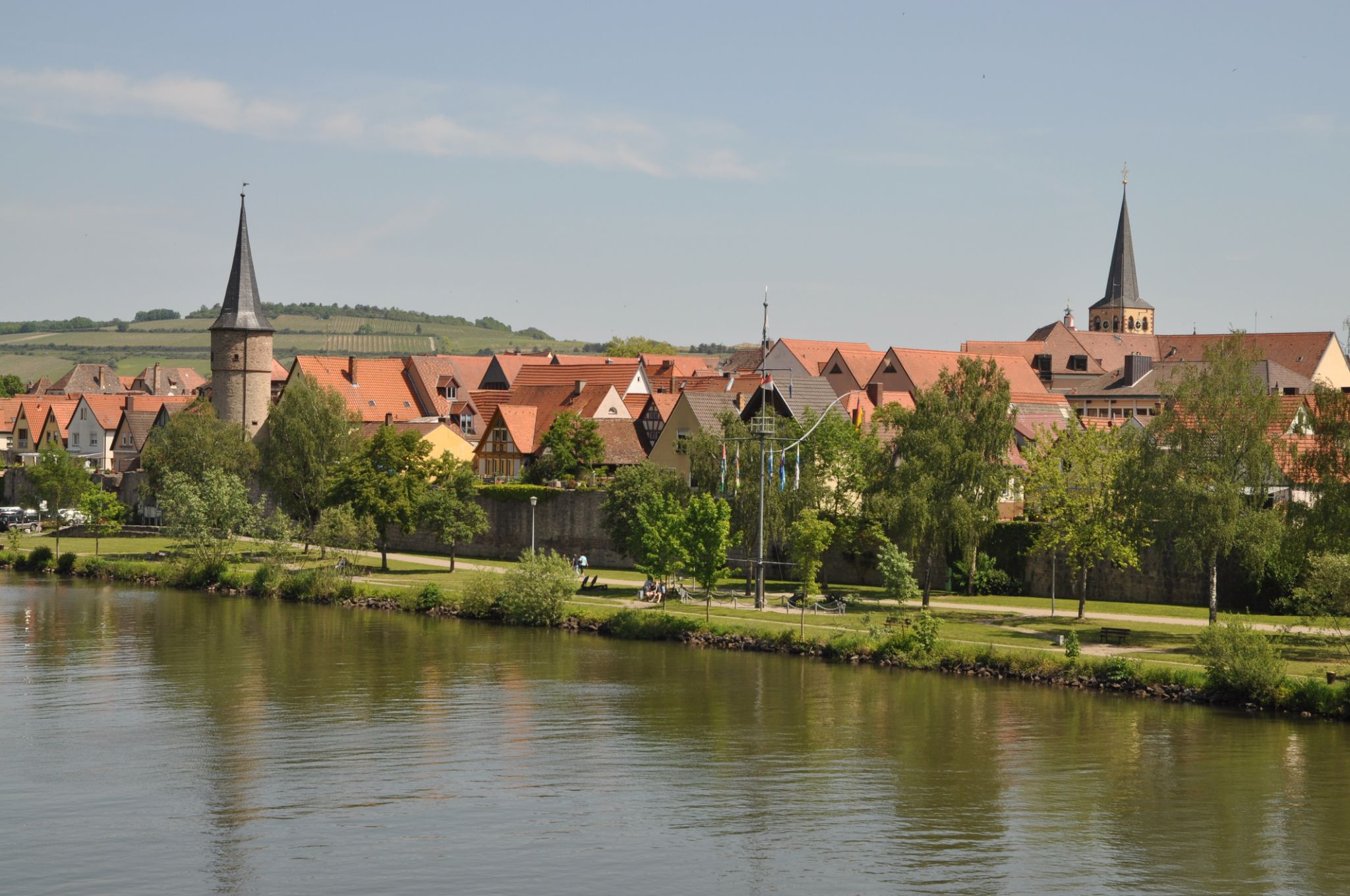 Day 4: 13:00-13:30
Day 4: 13:00-13:30Karlstadt / Germany
-
 Day 4: 17:00-17:30
Day 4: 17:00-17:30Wurzburg / Germany
Wurzburg is a historic city located on the banks of the Main River in southern Germany, renowned for its cultural heritage and picturesque landscapes. Founded during the Roman era, the city's rich history is reflected in its architecture and monuments. One of the main attractions is the Würzburg Residence, once the residence of the prince-bishops, which is listed as a UNESCO World Heritage site. This magnificent Baroque building, with its luxurious interiors and beautiful gardens, attracts visitors from around the world. Additionally, the city is known for its ancient fortresses, such as the Käpelsburg, which offers stunning views of the city and the river.
Wurzburg is also a center for winemaking, and the region around the city is famous for its vineyards, where the renowned Riesling wine is produced. The city is home to many cozy wine bars and restaurants where tourists can enjoy local wines. Würzburg is perfect for those who appreciate history, architecture, and gastronomic pleasures, as well as for those who want to enjoy the tranquil atmosphere of a small city with rich cultural traditions.
-
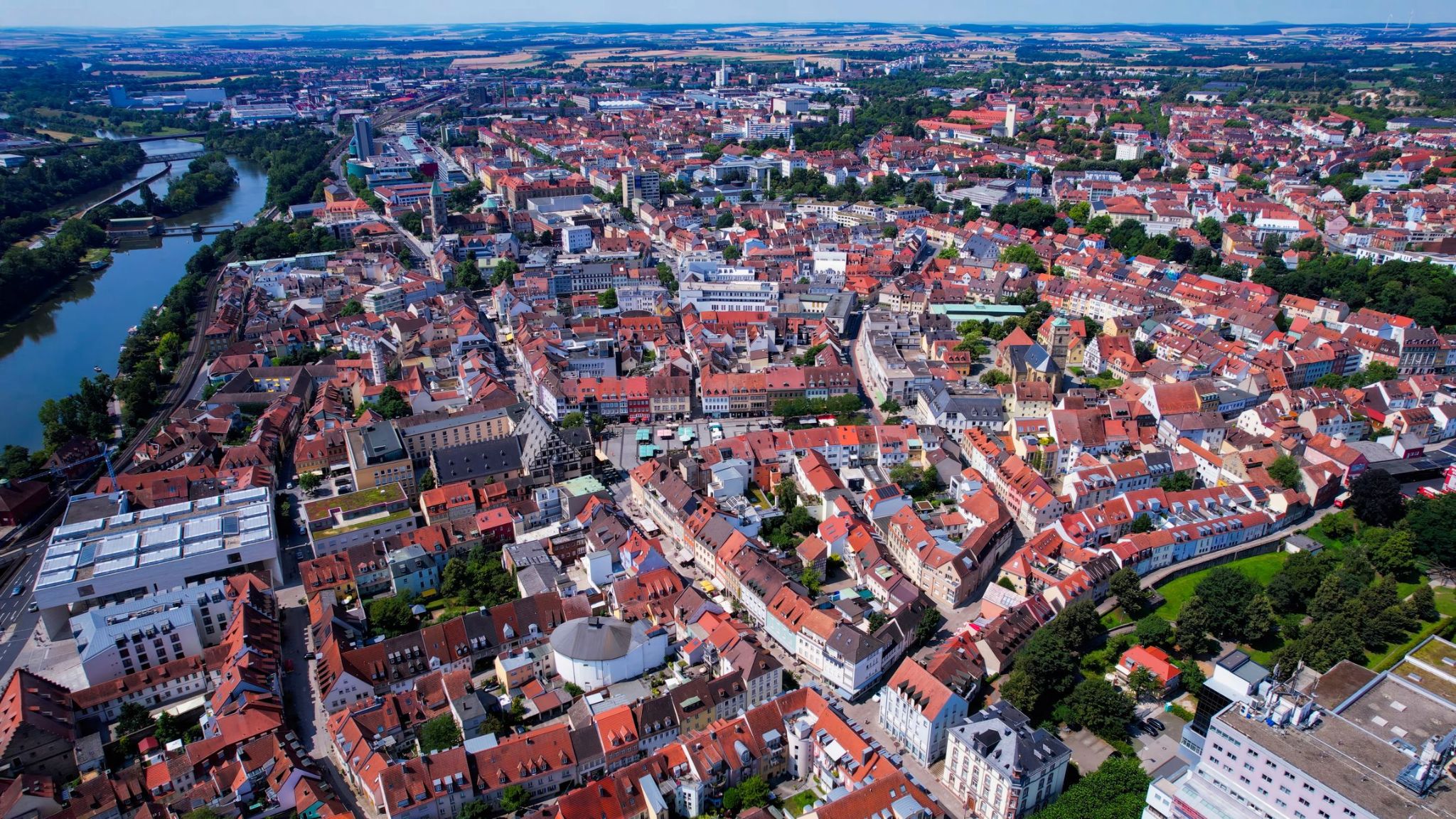 Day 5: 07:00-13:00
Day 5: 07:00-13:00Schweinfurt / Germany
Schweinfurt is an industrial city in northern Bavaria, located on the River Main. Historically, it played a key role in the development of Germany’s ball bearing and engineering industries: in the 19th century, major companies such as Kugelfischer and SKF were founded here. Despite its industrial character, the city retains historical charm — the old town with its cozy squares, Gothic churches, and remnants of medieval walls gives it a distinctive atmosphere.
Today, Schweinfurt blends its technological heritage with modern cultural life. The city hosts several interesting museums, including the Georg Schäfer Museum, which houses an impressive collection of 20th-century German art. For travelers, this city can be an unexpected discovery: free from tourist crowds, it offers a chance to experience authentic Bavaria — with its engineering pride, local cuisine, and welcoming spirit.
-
 Day 5: 21:00
Day 5: 21:00Bamberg / Germany
Perched atop seven hills in Upper Franconia, this city captivates with its medieval charm, half-timbered houses, and winding cobblestone streets. Bamberg, a UNESCO World Heritage Site, boasts over a thousand preserved buildings, including the iconic Old Town Hall that seemingly floats above the Regnitz River. The "Little Venice" district, with its 17th-century fishermen's houses lining the riverbanks, offers a picturesque setting reminiscent of its Italian namesake.
Bamberg is also renowned for its unique smoked beer, or Rauchbier, a tradition upheld by breweries like Schlenkerla since 1405. This distinctive brew, made by drying malt over beechwood fires, imparts a smoky flavor that pairs perfectly with the region's hearty cuisine. Whether you're exploring historic cathedrals, enjoying a gondola ride through the canals, or savoring local delicacies, Bamberg offers an unforgettable experience
-
 Day 6: 02:00
Day 6: 02:00Bamberg / Germany
Perched atop seven hills in Upper Franconia, this city captivates with its medieval charm, half-timbered houses, and winding cobblestone streets. Bamberg, a UNESCO World Heritage Site, boasts over a thousand preserved buildings, including the iconic Old Town Hall that seemingly floats above the Regnitz River. The "Little Venice" district, with its 17th-century fishermen's houses lining the riverbanks, offers a picturesque setting reminiscent of its Italian namesake.
Bamberg is also renowned for its unique smoked beer, or Rauchbier, a tradition upheld by breweries like Schlenkerla since 1405. This distinctive brew, made by drying malt over beechwood fires, imparts a smoky flavor that pairs perfectly with the region's hearty cuisine. Whether you're exploring historic cathedrals, enjoying a gondola ride through the canals, or savoring local delicacies, Bamberg offers an unforgettable experience
-
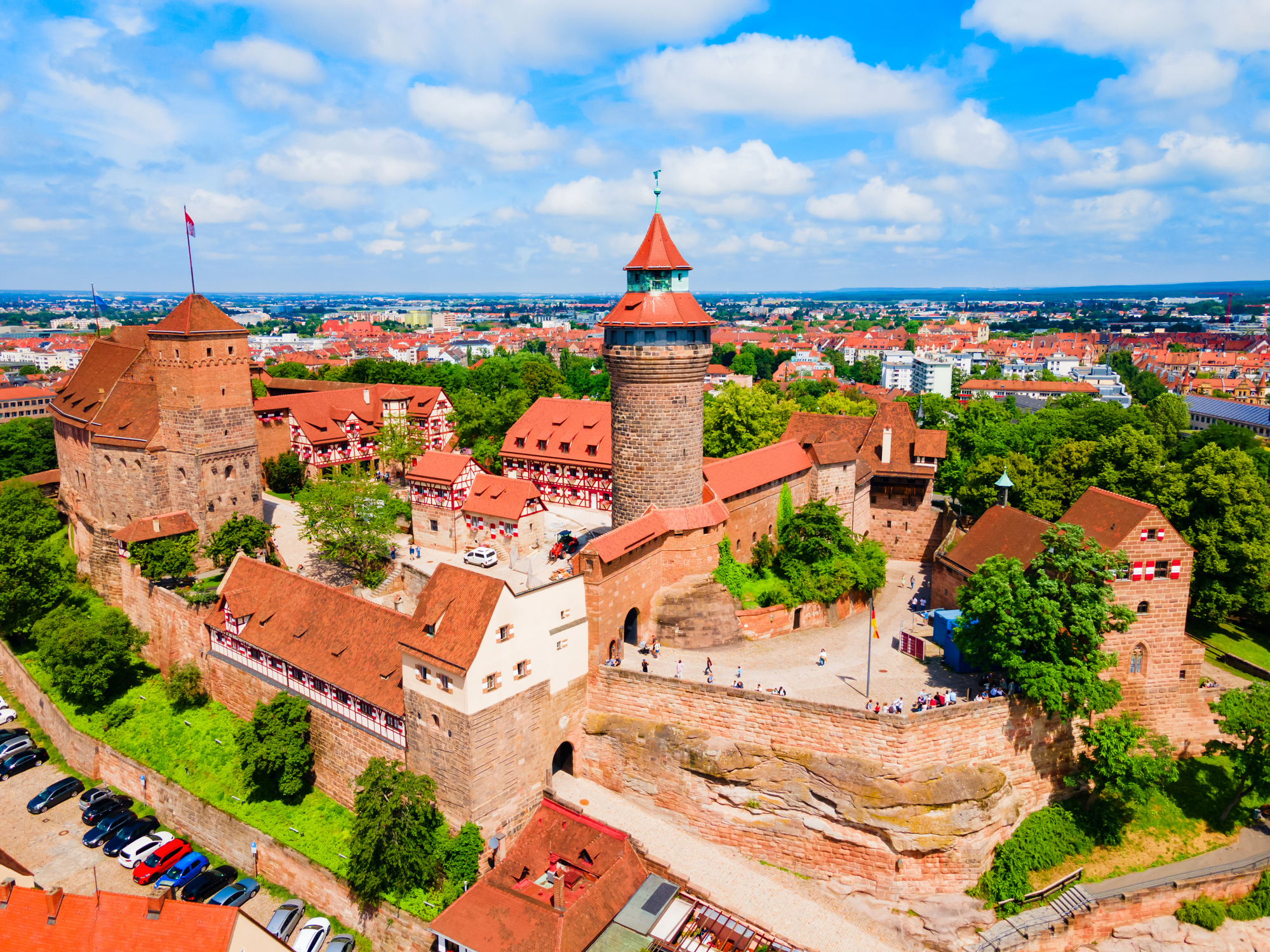 Day 6: 13:00-18:00
Day 6: 13:00-18:00Nuremberg / Germany
Nuremberg is a historic city in southern Germany, located in Bavaria. Known for its medieval atmosphere and as a center of German culture and history, the city became an important trade and cultural hub during the Middle Ages. Today, its historic center attracts tourists from all over the world. One of the main attractions is the Nuremberg Castle, which overlooks the city and provides a stunning view of its streets and squares. The famous market, where visitors can buy unique goods and taste traditional German dishes, is also worth mentioning.
Nuremberg also holds significant importance in world history, as the Nuremberg Trials were held here after World War II. Today, the city preserves the memory of this time with numerous museums and memorials dedicated to these events. Furthermore, Nuremberg is a major cultural center, hosting regular theater, music, and art festivals. This city is the perfect destination for those who want to enjoy a mix of ancient history, contemporary culture, and the unique atmosphere of Bavaria.
-
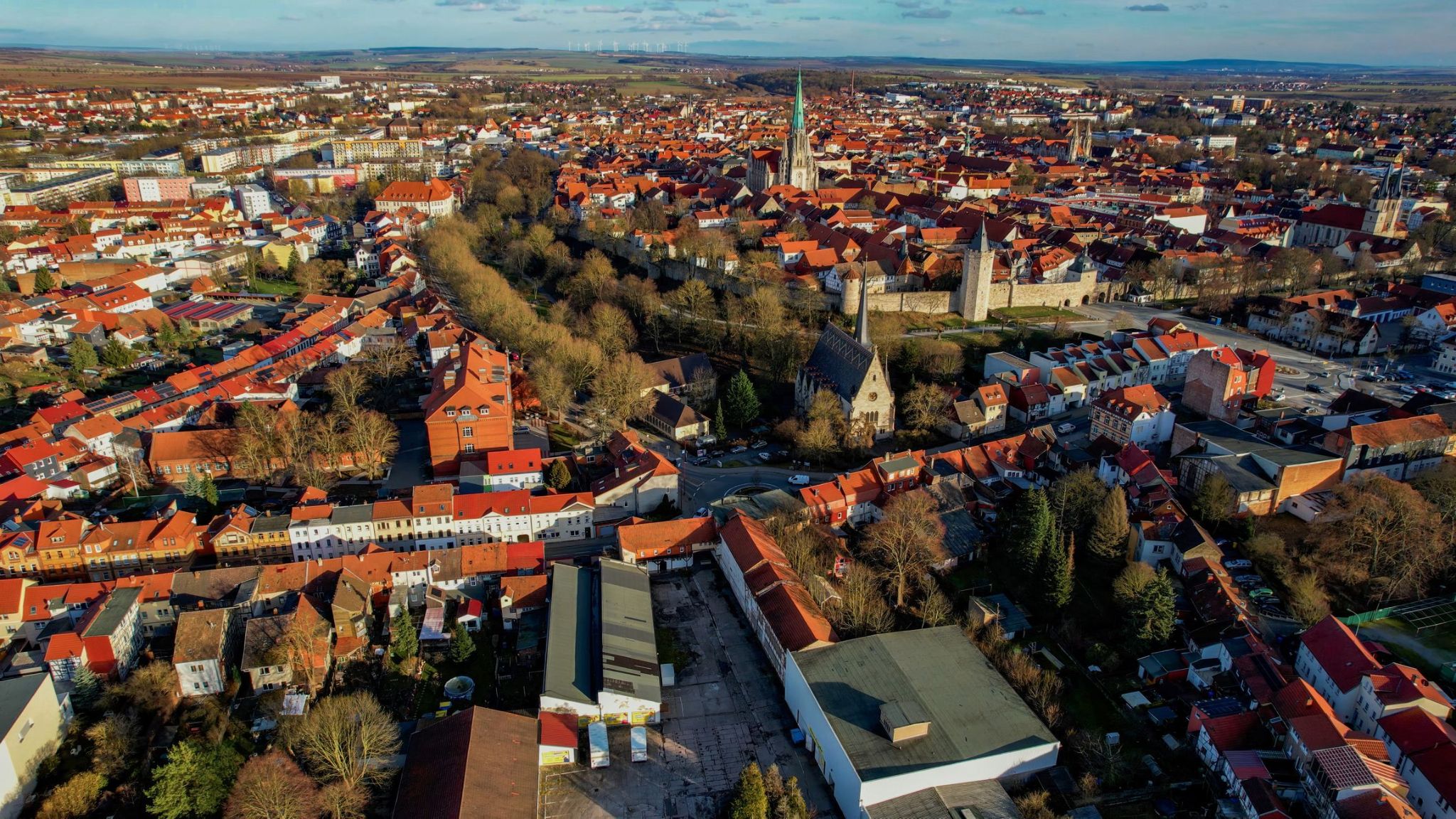 Day 6: 23:00
Day 6: 23:00Muehlhausen / Germany
Muehlhausen (Mühlhausen) is a small town located in central Germany, in the state of Thuringia. Its history dates back to the Middle Ages, and the town is known for its cultural and architectural landmarks. Among the main attractions of Mühlhausen are the historic town hall, as well as several churches, including the St. James Church with its beautiful stained glass windows. Mühlhausen is also famous for its charming historic center, where buildings from various periods of architecture have been preserved.
In addition to cultural landmarks, the town attracts tourists with its natural beauty. The surrounding area of Mühlhausen features picturesque forests and hills, perfect for hiking and outdoor activities. The town is also known for its traditions and festivals, which take place throughout the year. Visitors can experience the atmosphere of a small German town with its warm hospitality and rich cultural heritage.
-
 Day 7: 05:30
Day 7: 05:30Muehlhausen / Germany
Muehlhausen (Mühlhausen) is a small town located in central Germany, in the state of Thuringia. Its history dates back to the Middle Ages, and the town is known for its cultural and architectural landmarks. Among the main attractions of Mühlhausen are the historic town hall, as well as several churches, including the St. James Church with its beautiful stained glass windows. Mühlhausen is also famous for its charming historic center, where buildings from various periods of architecture have been preserved.
In addition to cultural landmarks, the town attracts tourists with its natural beauty. The surrounding area of Mühlhausen features picturesque forests and hills, perfect for hiking and outdoor activities. The town is also known for its traditions and festivals, which take place throughout the year. Visitors can experience the atmosphere of a small German town with its warm hospitality and rich cultural heritage.
-
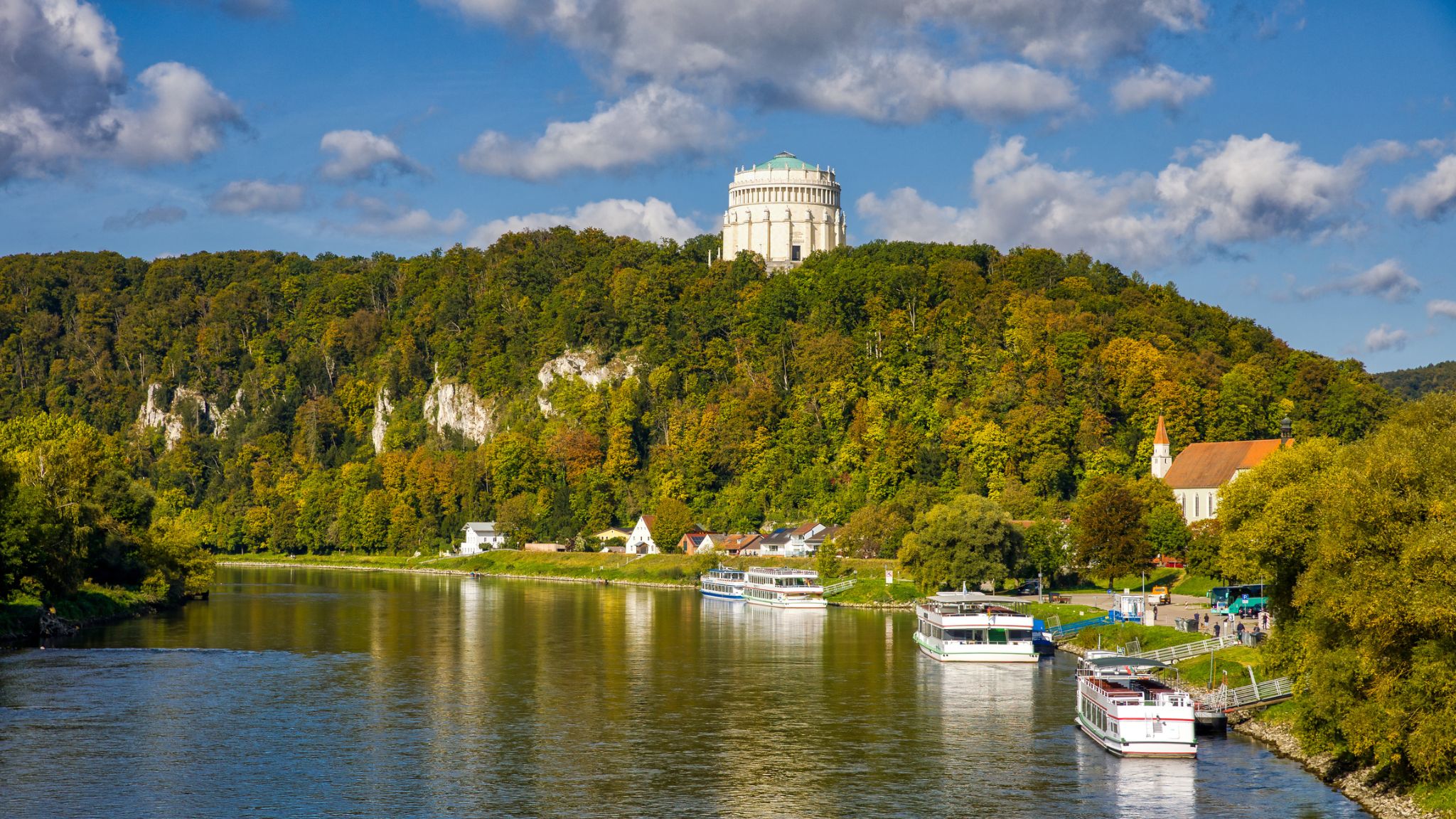 Day 7: 13:00-13:30
Day 7: 13:00-13:30Kelheim / Germany
-
 Day 7: 17:00-23:00
Day 7: 17:00-23:00Regensburg / Germany
-
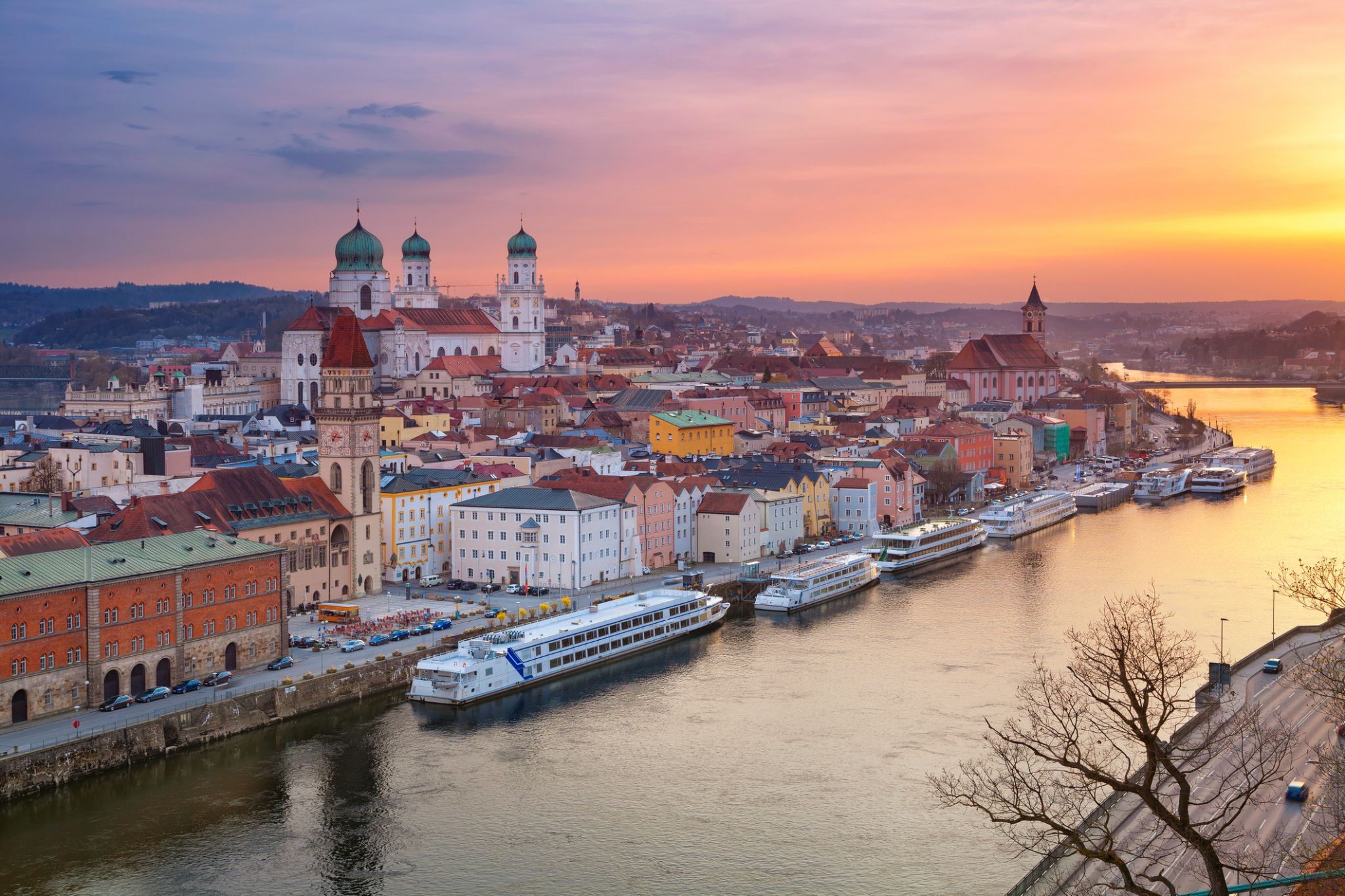 Day 8: 10:00-16:00
Day 8: 10:00-16:00Passau / Germany
-
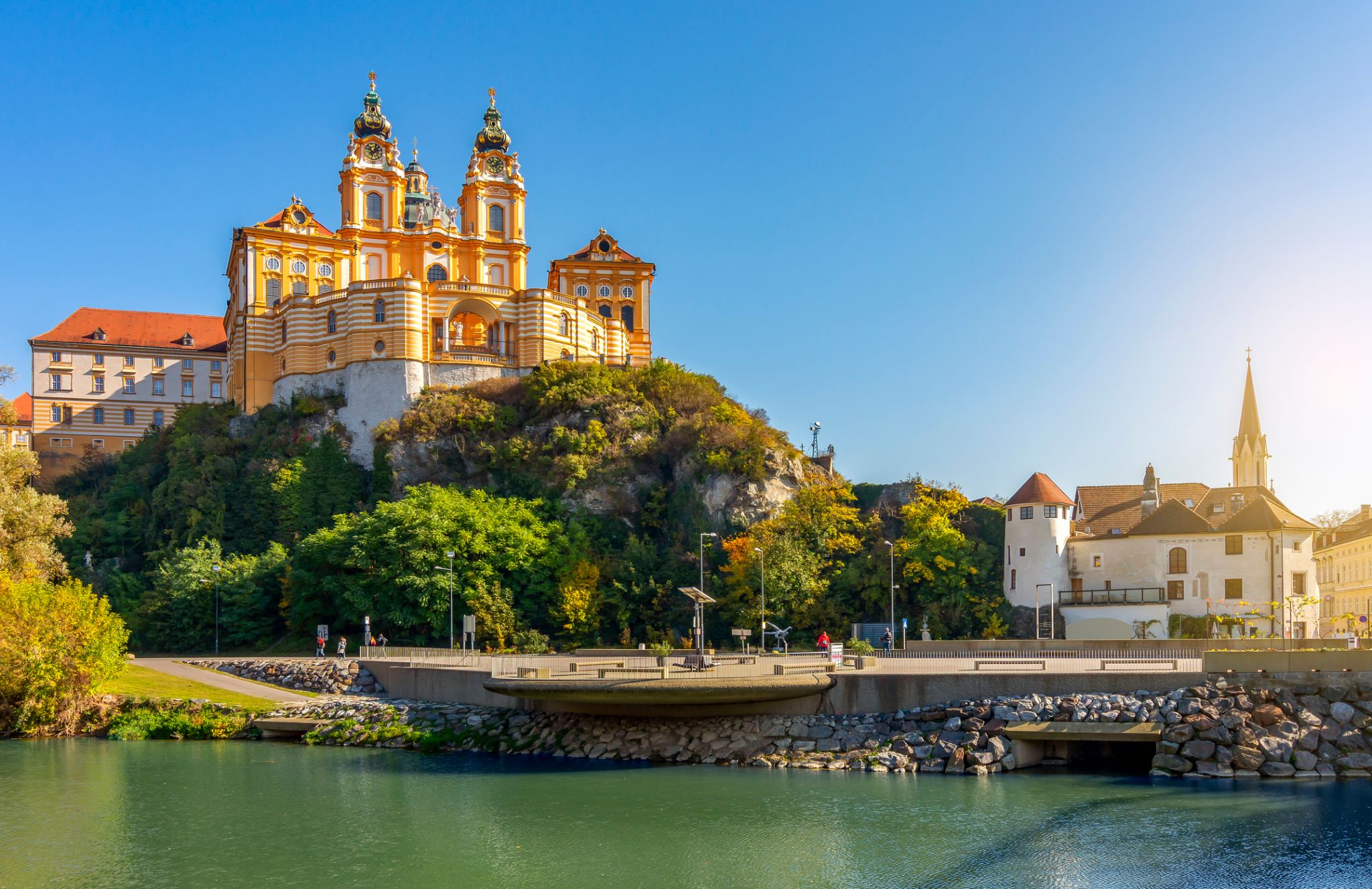 Day 9: 06:00-12:00
Day 9: 06:00-12:00Melk / Austria
Melk is a city of Austria, in the federal state of Lower Austria, next to the Wachau valley along the Danube. Melk has a population of 5,257 (as of 2012). It is best known as the site of a massive baroque Benedictine monastery named Melk Abbey.
The town is first mentioned as Medilica in 831 in a donation of Louis the German; the name is from a Slavic word for 'border.' The area around Melk was given to Leopold I, Margrave of Austria, in the year 976 to serve as a buffer between the Magyars to east and Bavaria to the west. In 996 mention was first made of an area known as Ostarrîchi, which is the origin of the word Österreich (German for Austria). The bluff which holds the current monastery held a Babenberger castle until the site was given to Benedictine monks from nearby Lambach by Leopold II, in 1089. Melk received market rights in 1227 and became a municipality in 1898. In a very small area, Melk presents a great deal of architectural variety from many centuries.
-
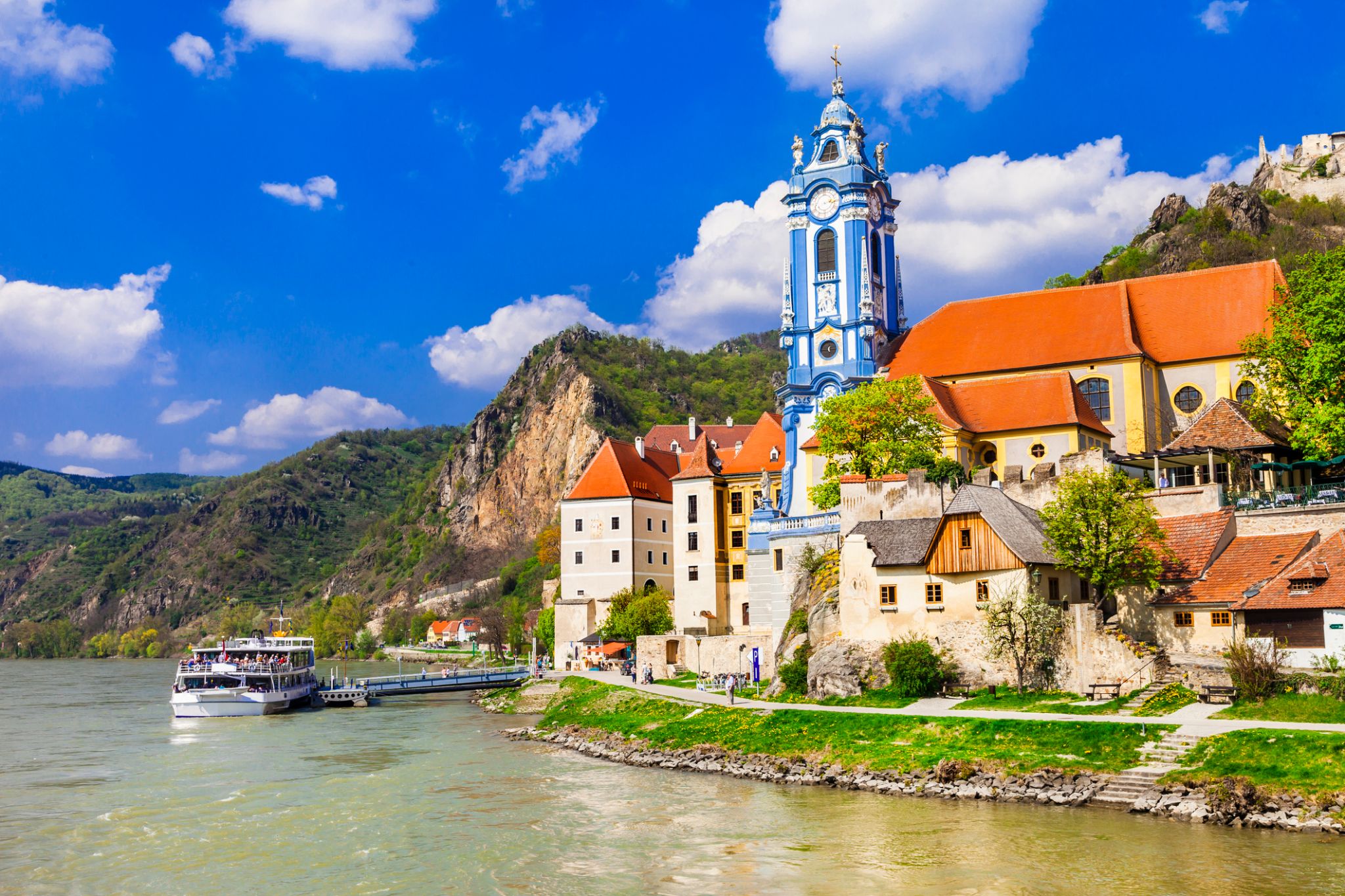 Day 9: 13:30-15:30
Day 9: 13:30-15:30Dürnstein / Austria
-
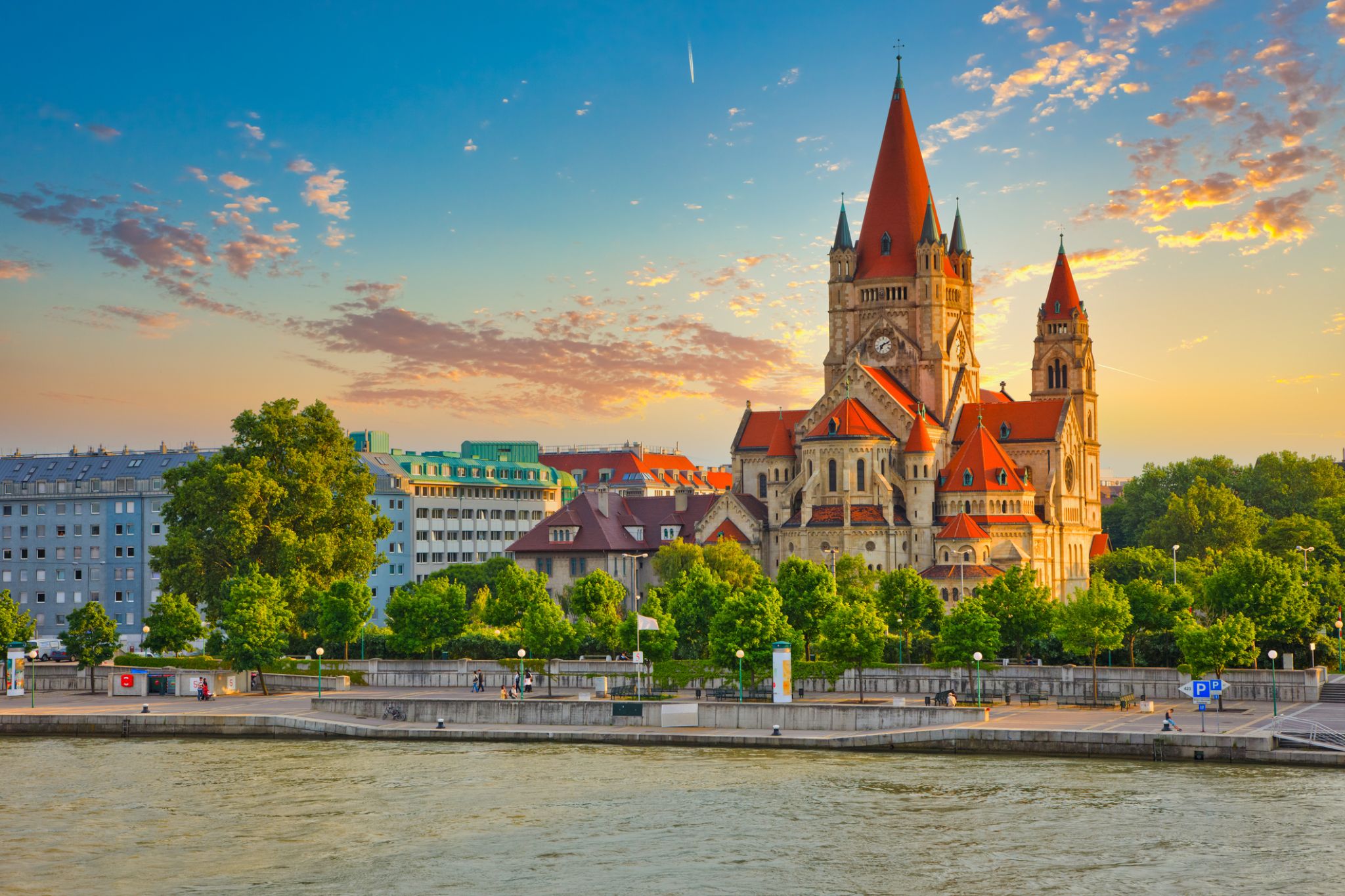 Day 9: 20:30
Day 9: 20:30Vienna / Austria
Vienna is the federal capital and largest city of Austria, and one of the nine states of Austria. Vienna is Austria's primate city, with a population of about 1.9 million (2.6 million within the metropolitan area, nearly one third of Austria's population), and its cultural, economic, and political centre. It is the 7th-largest city by population within city limits in the European Union. Until the beginning of the 20th century, it was the largest German-speaking city in the world, and before the splitting of the Austro-Hungarian Empire in World War I, the city had 2 million inhabitants. Today, it has the second largest number of German speakers after Berlin.Vienna is host to many major international organizations, including the United Nations and OPEC. The city is located in the eastern part of Austria and is close to the borders of the Czech Republic, Slovakia, and Hungary. These regions work together in a European Centrope border region. Along with nearby Bratislava, Vienna forms a metropolitan region with 3 million inhabitants. In 2001, the city centre was designated a UNESCO World Heritage Site. In July 2017 it was moved to the list of World Heritage in Danger.
Apart from being regarded as the City of Music[ because of its musical legacy, Vienna is also said to be "The City of Dreams" because it was home to the world's first psychoanalyst – Sigmund Freud. The city's roots lie in early Celticand Roman settlements that transformed into a Medieval and Baroque city, and then the capital of the Austro-Hungarian Empire. It is well known for having played an essential role as a leading European music centre, from the great age of Viennese Classicism through the early part of the 20th century. The historic centre of Vienna is rich in architectural ensembles, including Baroque castles and gardens, and the late-19th-century Ringstraße lined with grand buildings, monuments and parks.
Vienna is known for its high quality of life. In a 2005 study of 127 world cities, the Economist Intelligence Unit ranked the city first (in a tie with Vancouver and San Francisco) for the world's most liveable cities. Between 2011 and 2015, Vienna was ranked second, behind Melbourne. In 2018, it replaced Melbourne as the number one spot. For eight consecutive years (2009–2016), the human-resource-consulting firm Mercer ranked Vienna first in its annual "Quality of Living" survey of hundreds of cities around the world, a title the city still held in 2016. Monocle's 2015 "Quality of Life Survey" ranked Vienna second on a list of the top 25 cities in the world "to make a base within."
The UN-Habitat classified Vienna as the most prosperous city in the world in 2012/2013. The city was ranked 1st globally for its culture of innovation in 2007 and 2008, and sixth globally (out of 256 cities) in the 2014 Innovation Cities Index, which analyzed 162 indicators in covering three areas: culture, infrastructure, and markets. Vienna regularly hosts urban planning conferences and is often used as a case study by urban planners.
Between 2005 and 2010, Vienna was the world's number-one destination for international congresses and conventions. It attracts over 6.8 million tourists a year.
-
 Day 10: 18:30
Day 10: 18:30Vienna / Austria
Vienna is the federal capital and largest city of Austria, and one of the nine states of Austria. Vienna is Austria's primate city, with a population of about 1.9 million (2.6 million within the metropolitan area, nearly one third of Austria's population), and its cultural, economic, and political centre. It is the 7th-largest city by population within city limits in the European Union. Until the beginning of the 20th century, it was the largest German-speaking city in the world, and before the splitting of the Austro-Hungarian Empire in World War I, the city had 2 million inhabitants. Today, it has the second largest number of German speakers after Berlin.Vienna is host to many major international organizations, including the United Nations and OPEC. The city is located in the eastern part of Austria and is close to the borders of the Czech Republic, Slovakia, and Hungary. These regions work together in a European Centrope border region. Along with nearby Bratislava, Vienna forms a metropolitan region with 3 million inhabitants. In 2001, the city centre was designated a UNESCO World Heritage Site. In July 2017 it was moved to the list of World Heritage in Danger.
Apart from being regarded as the City of Music[ because of its musical legacy, Vienna is also said to be "The City of Dreams" because it was home to the world's first psychoanalyst – Sigmund Freud. The city's roots lie in early Celticand Roman settlements that transformed into a Medieval and Baroque city, and then the capital of the Austro-Hungarian Empire. It is well known for having played an essential role as a leading European music centre, from the great age of Viennese Classicism through the early part of the 20th century. The historic centre of Vienna is rich in architectural ensembles, including Baroque castles and gardens, and the late-19th-century Ringstraße lined with grand buildings, monuments and parks.
Vienna is known for its high quality of life. In a 2005 study of 127 world cities, the Economist Intelligence Unit ranked the city first (in a tie with Vancouver and San Francisco) for the world's most liveable cities. Between 2011 and 2015, Vienna was ranked second, behind Melbourne. In 2018, it replaced Melbourne as the number one spot. For eight consecutive years (2009–2016), the human-resource-consulting firm Mercer ranked Vienna first in its annual "Quality of Living" survey of hundreds of cities around the world, a title the city still held in 2016. Monocle's 2015 "Quality of Life Survey" ranked Vienna second on a list of the top 25 cities in the world "to make a base within."
The UN-Habitat classified Vienna as the most prosperous city in the world in 2012/2013. The city was ranked 1st globally for its culture of innovation in 2007 and 2008, and sixth globally (out of 256 cities) in the 2014 Innovation Cities Index, which analyzed 162 indicators in covering three areas: culture, infrastructure, and markets. Vienna regularly hosts urban planning conferences and is often used as a case study by urban planners.
Between 2005 and 2010, Vienna was the world's number-one destination for international congresses and conventions. It attracts over 6.8 million tourists a year.
-
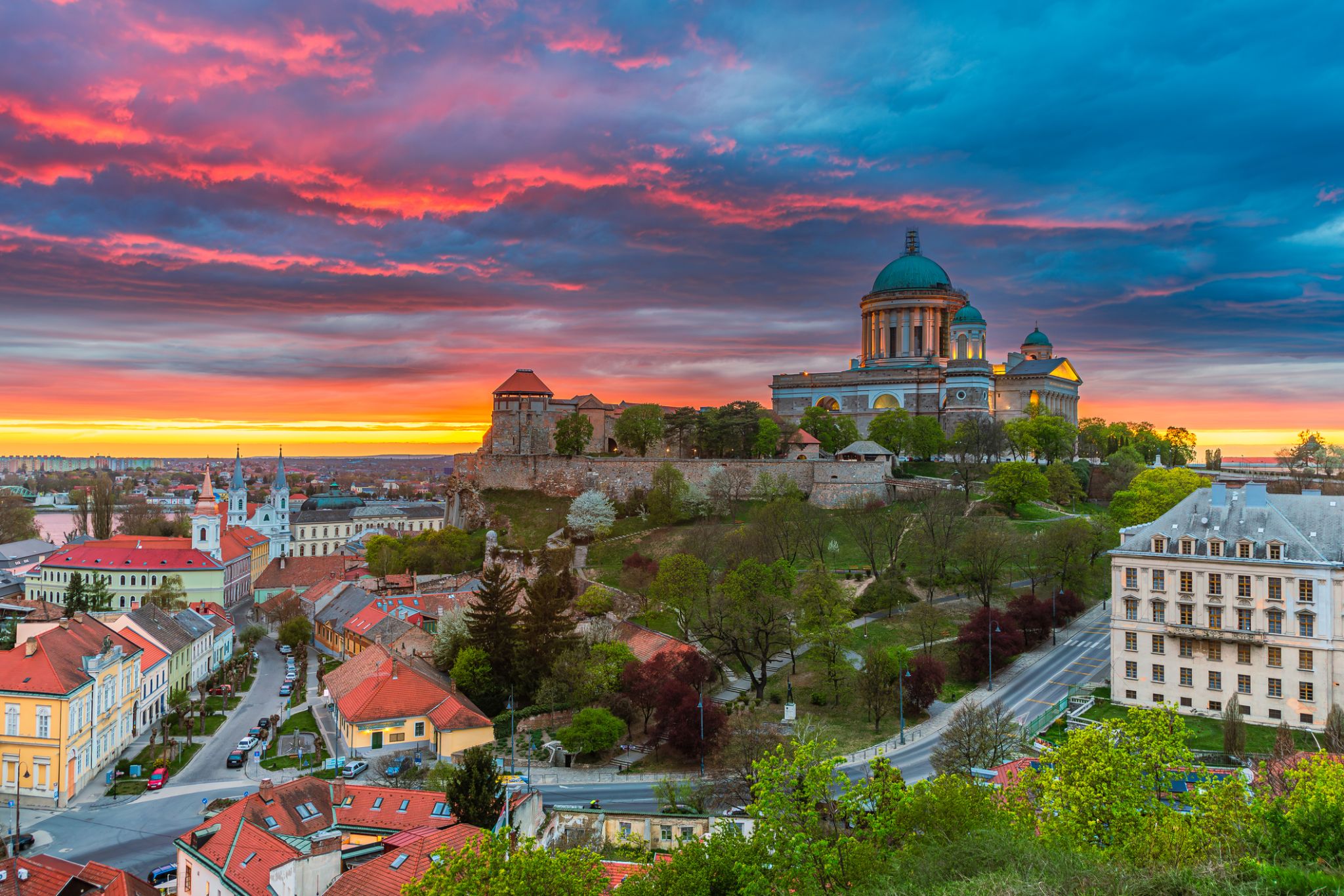 Day 11: 06:00-12:00
Day 11: 06:00-12:00Esztergom / Hungary
Esztergom is a city in northern Hungary, 46 kilometres (29 miles) northwest of the capital Budapest. It lies in Komárom-Esztergom county, on the right bank of the river Danube, which forms the border with Slovakia there.
Esztergom was the capital of Hungary from the 10th till the mid-13th century when King Béla IV of Hungary moved the royal seat to Buda.
Esztergom is the seat of the prímás (see Primate) of the Roman Catholic Church in Hungary, and the former seat of the Constitutional Court of Hungary. The city has the Keresztény Múzeum, the largest ecclesiastical collection in Hungary. Its cathedral, Esztergom Basilica is the largest church in Hungary.
-
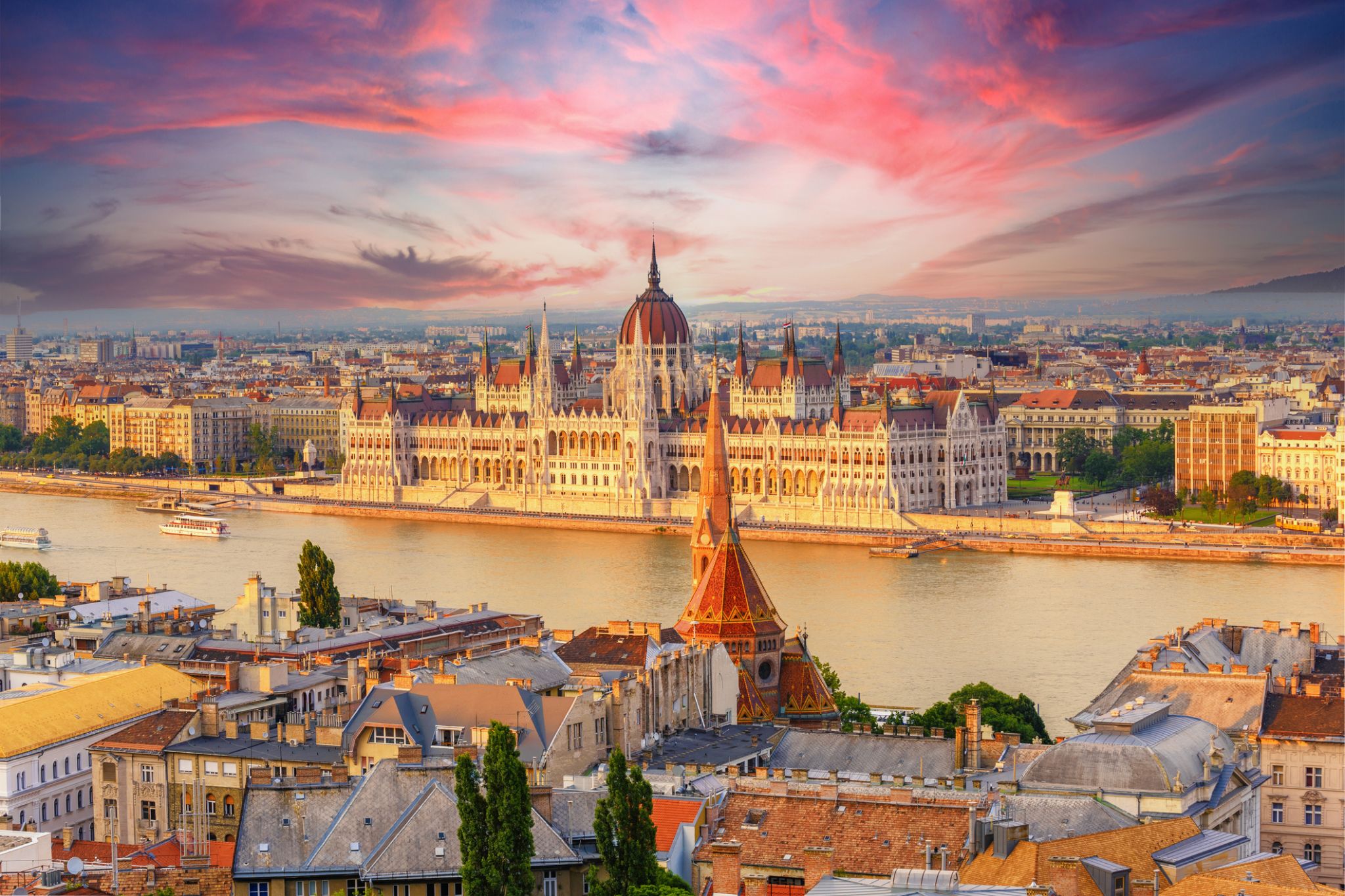 Day 11: 16:00
Day 11: 16:00Budapest / Hungary
the capital of Hungary, in the northern central part of the country; population 1,712,210 (2009). It was formed in 1873 by the union of the city of Buda on the right bank of the Danube River with the city of Pest on the left.
-
 Day 12:
Day 12:Budapest / Hungary
the capital of Hungary, in the northern central part of the country; population 1,712,210 (2009). It was formed in 1873 by the union of the city of Buda on the right bank of the Danube River with the city of Pest on the left.
-
 Day 13: 19:00
Day 13: 19:00Budapest / Hungary
the capital of Hungary, in the northern central part of the country; population 1,712,210 (2009). It was formed in 1873 by the union of the city of Buda on the right bank of the Danube River with the city of Pest on the left.
-
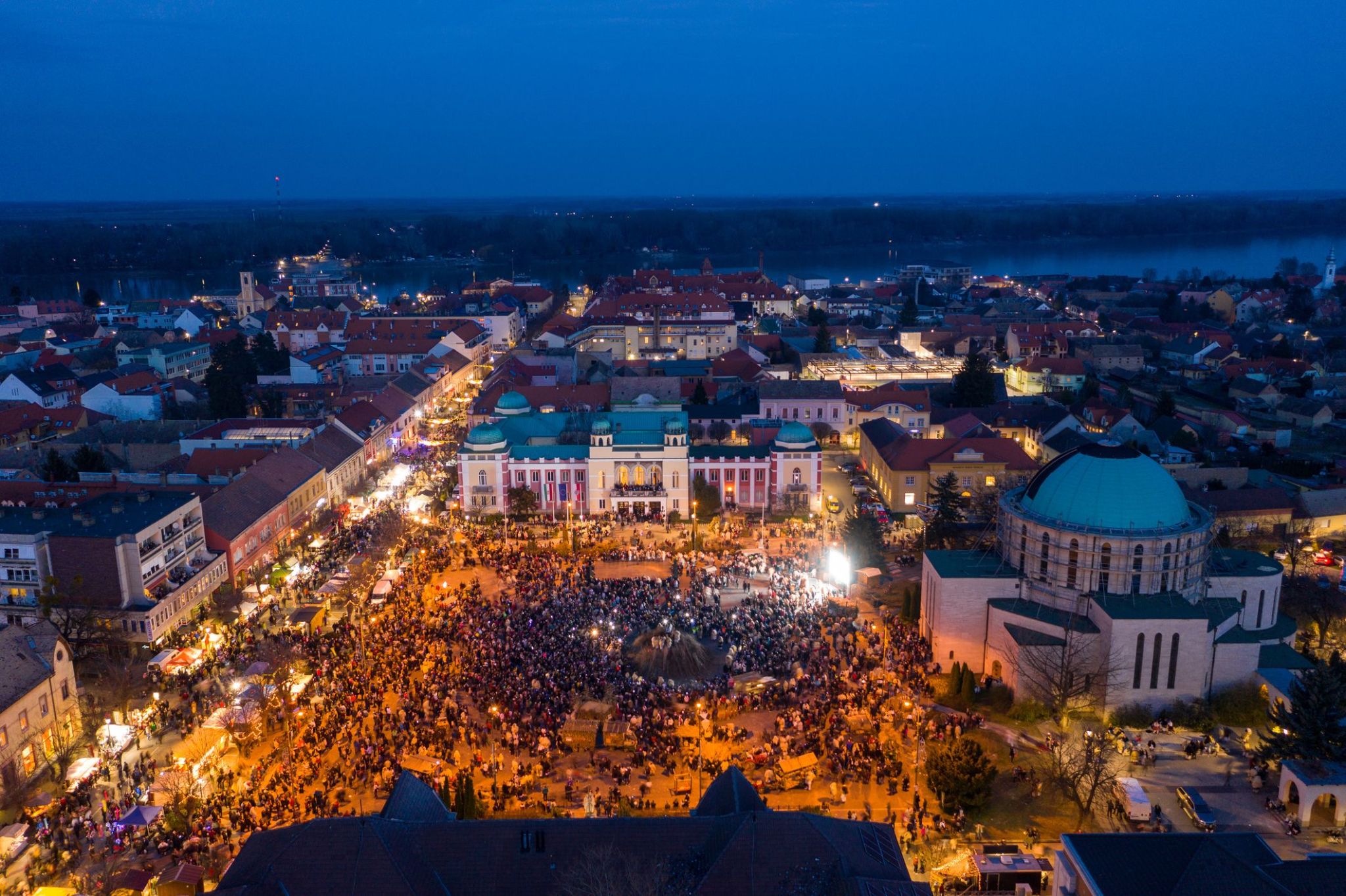 Day 14: 07:00-09:00
Day 14: 07:00-09:00Mohacs / Mohach / Hungary
Cozy and nestled on the banks of the Danube, Mohacs / Mohach invites travelers to discover a lesser-known yet remarkable chapter of Hungarian history. The city is a symbol of pivotal events, including the famous Battle of 1526, which deeply influenced all of Central Europe. Beyond its historical significance, Mohacs / Mohach enchants with narrow streets, old buildings, and a warm, almost rural atmosphere.
The city truly comes alive during the traditional Busójárás festival, which is listed as UNESCO Intangible Cultural Heritage. During this time, the streets fill with masks, dances, and ancient rituals rooted in Slavic and Hungarian myths. Add to that cozy cafes, riverside walks, and local wineries — and Mohacs / Mohach becomes a perfect stop for those seeking authentic experiences off the beaten path.
-
 Day 14: 14:00-20:00
Day 14: 14:00-20:00Osijek / Croatia
On the banks of the Drava River, where historical landmarks meet modern life, lies one of Croatia's most charming cities — Osijek. Every corner here is filled with history, from ancient fortresses to the cozy streets of the old town. Osijek is a place where you can enjoy the tranquility of scenic riverfront walks while also feeling the vibrant energy of a modern city with its cafes and shops.
The city is known for its architectural landmarks, such as the Tvrđa Fortress, and many museums, such as the Osijek Museum, which tells the story of the region's centuries-old history. Special attention should be given to the natural beauty: Osijek is surrounded by green spaces and parks, and the Drava River is perfect for boat rides or fishing. Local restaurants offer traditional Slavic dishes, adding extra charm to this unique city.
-
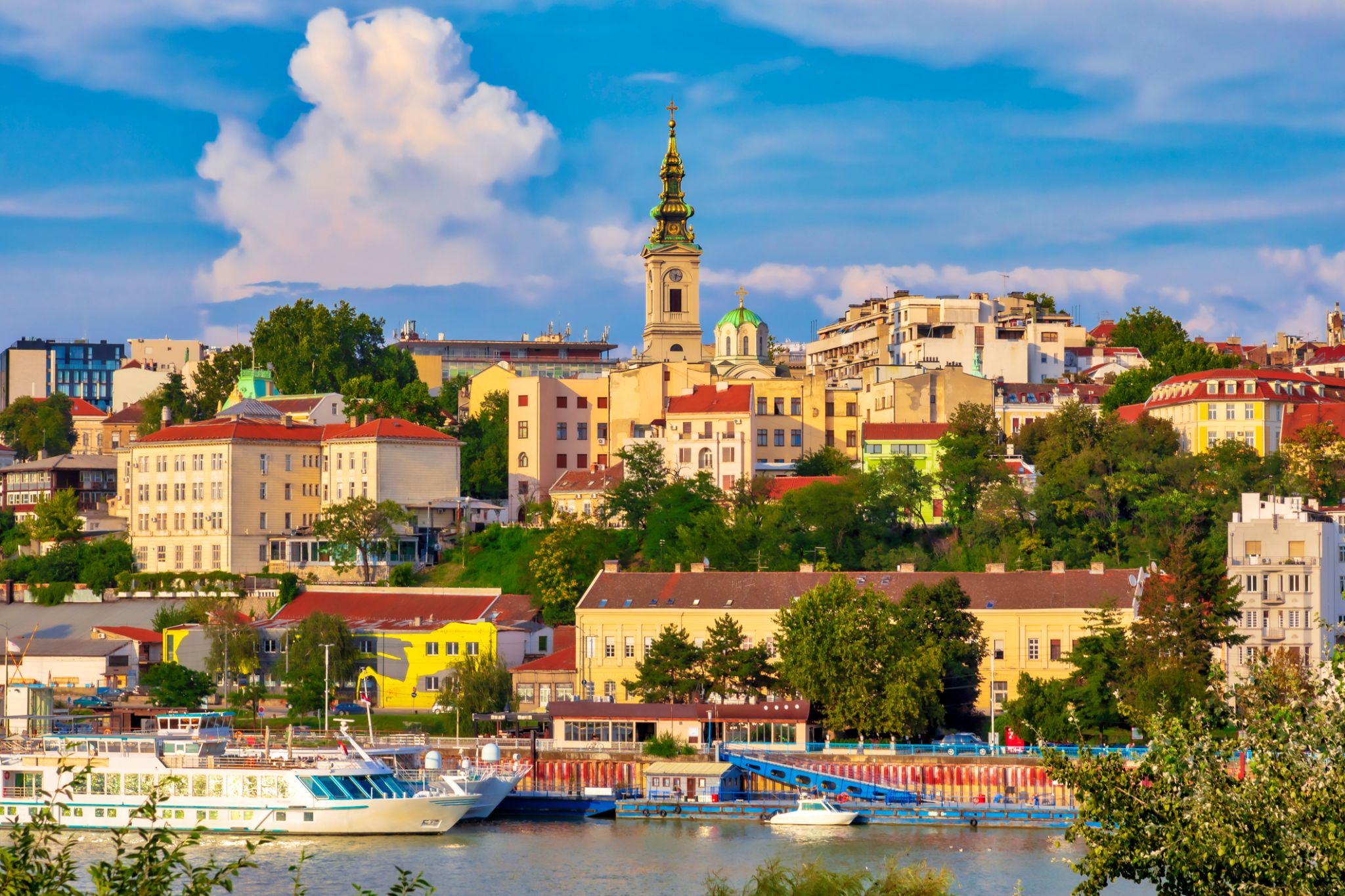 Day 15: 08:00-21:00
Day 15: 08:00-21:00Belgrade / Serbia
-
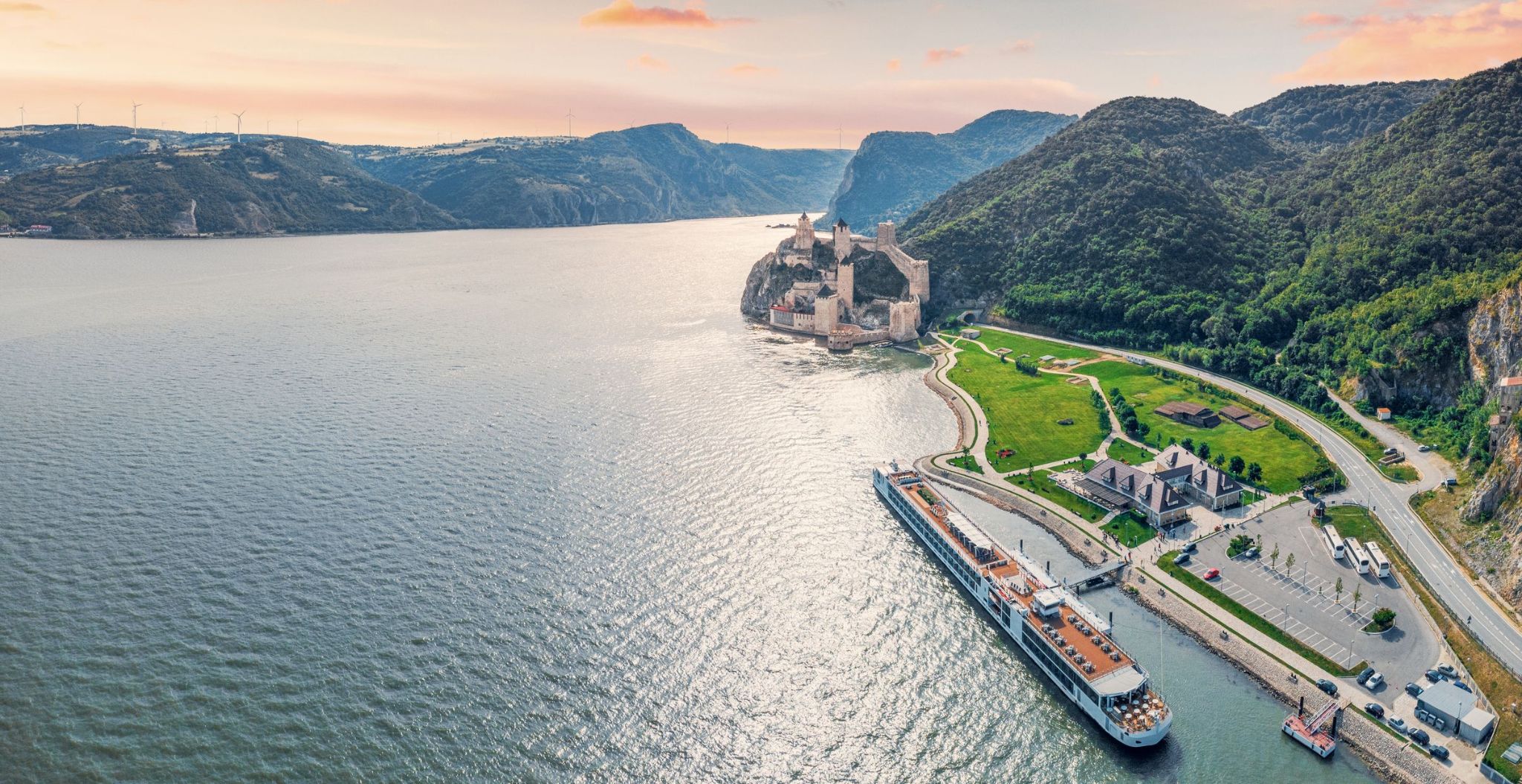 Day 16: 13:00-17:00
Day 16: 13:00-17:00Golubac / Serbia
Where the Danube meets the mighty rocks of the Iron Gates, a journey through time begins among medieval fortress walls. The impressive Golubac Fortress — one of the most picturesque in Serbia — stands proudly, carefully restored and open to visitors. This majestic citadel, built in the 14th century, once guarded a key strategic passage and now offers panoramic views of the river and the Romanian mountains across the bank.
Golubac is not only about history, but also nature: it lies within the Đerdap National Park, ideal for walking, birdwatching, or cycling along the river. Cozy cafés, local cuisine, and the warm hospitality of the locals make this spot perfect for a short break or a slow, relaxed stay in the spirit of old Serbia.
-
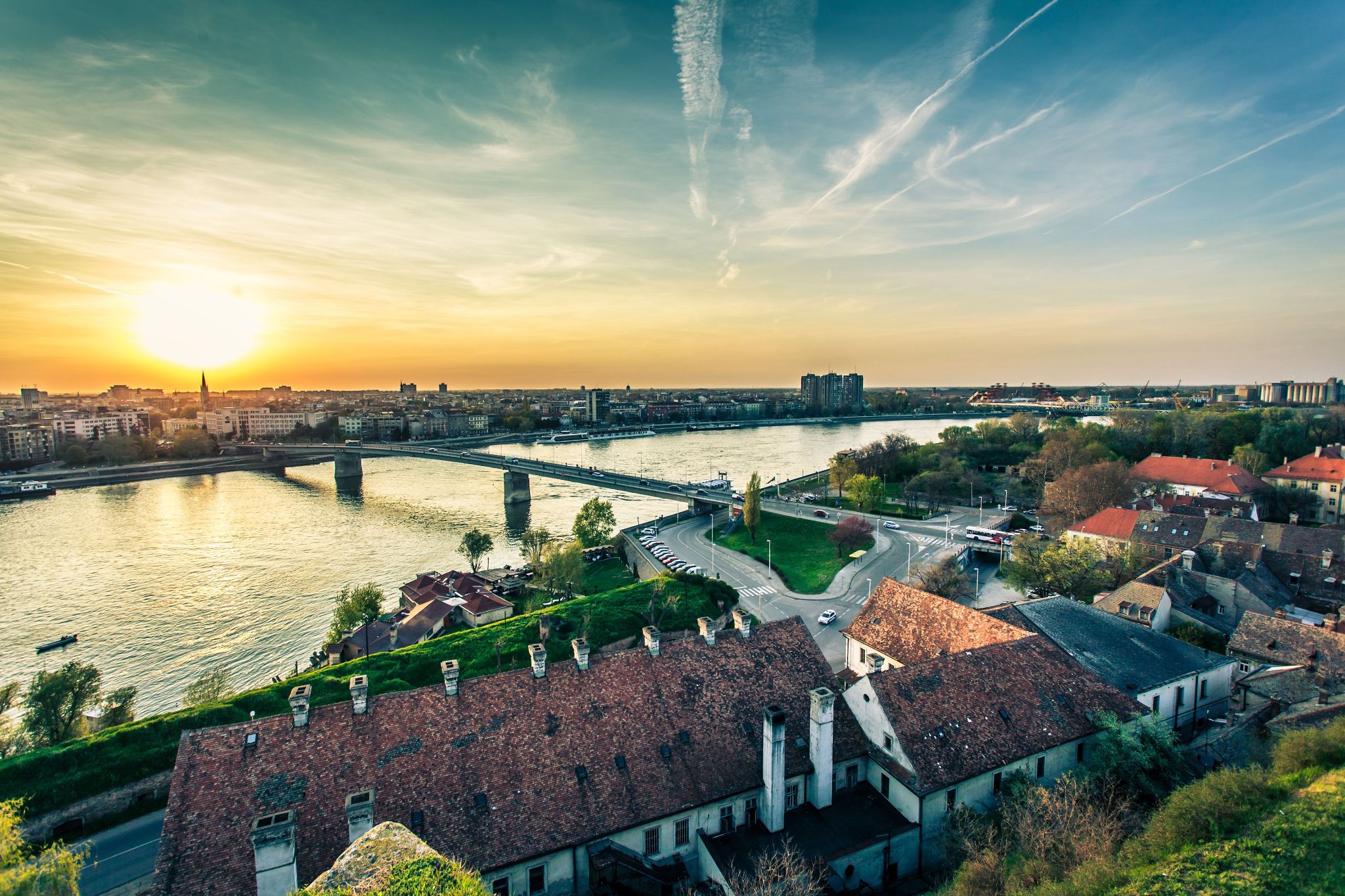 Day 17: 08:00-13:00
Day 17: 08:00-13:00Novi Sad / Serbia
Where the Danube gently curves around ancient fortifications, Novi Sad greets travelers with its charming old streets and a relaxed bohemian atmosphere. This Serbian city, nestled at the foot of Mount Fruška Gora, is renowned for its perfect blend of history, culture, and nature. Novi Sad is not only the cultural capital of the country but also one of Serbia’s greenest cities, featuring cozy parks and panoramic river views.
Particular attention should be paid to the Petrovaradin Fortress—an imposing 18th-century structure often referred to as the "Gibraltar on the Danube." Every year, this fortress hosts the famous EXIT music festival, attracting modern music lovers from all over the world. Strolling through the center of Novi Sad, tourists discover Hungarian, Austrian, and Balkan heritage reflected in the architecture, gastronomy, and the warm hospitality of the locals.
-
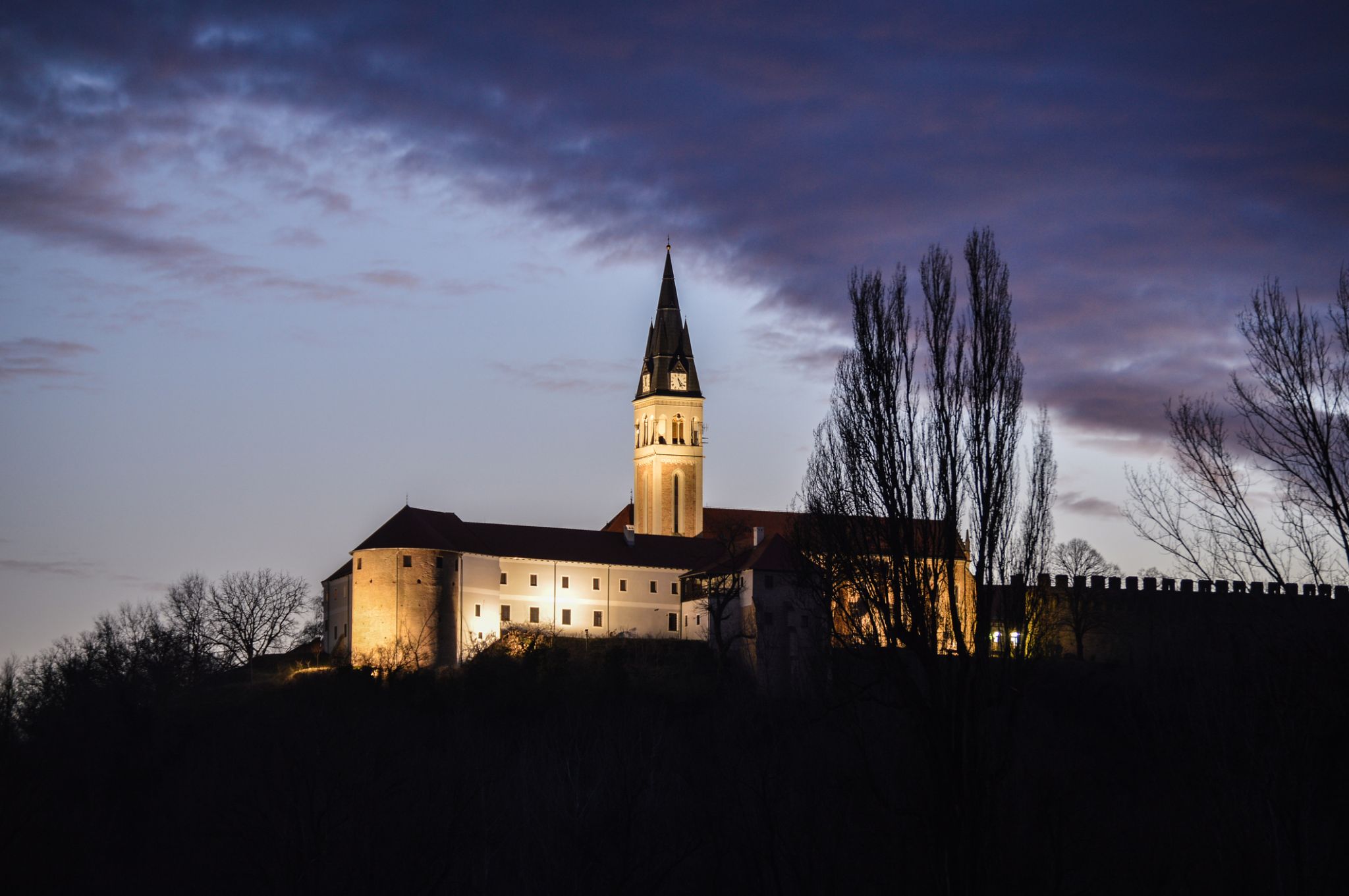 Day 17: 16:00-17:00
Day 17: 16:00-17:00Ilok / Croatia
-
 Day 17: 19:30-20:30
Day 17: 19:30-20:30Vukovar / Croatia
This city, hidden on the banks of the Danube River, offers a unique blend of historical heritage and natural beauty. Vukovar is a place where the spirit of a glorious past merges with the revival brought by peaceful times. The city combines traces of rich history with modern comfort, creating an atmosphere full of contrasts and captivating magic.
Vukovar is known for its stunning architecture and landmarks, such as the Vukovar Fortress and the Church of St. Philip and James. Visitors can explore unique museums, such as the Vukovar Museum, which tells the story of events that became part of the city's historical destiny. Along the river, picturesque promenades stretch, ideal for a leisurely stroll while enjoying nature, and local restaurants offer traditional dishes like čvarci and lamb, which will delight even the most demanding gourmets.
-
 Day 18: 08:00-14:00
Day 18: 08:00-14:00Mohacs / Mohach / Hungary
Cozy and nestled on the banks of the Danube, Mohacs / Mohach invites travelers to discover a lesser-known yet remarkable chapter of Hungarian history. The city is a symbol of pivotal events, including the famous Battle of 1526, which deeply influenced all of Central Europe. Beyond its historical significance, Mohacs / Mohach enchants with narrow streets, old buildings, and a warm, almost rural atmosphere.
The city truly comes alive during the traditional Busójárás festival, which is listed as UNESCO Intangible Cultural Heritage. During this time, the streets fill with masks, dances, and ancient rituals rooted in Slavic and Hungarian myths. Add to that cozy cafes, riverside walks, and local wineries — and Mohacs / Mohach becomes a perfect stop for those seeking authentic experiences off the beaten path.
-
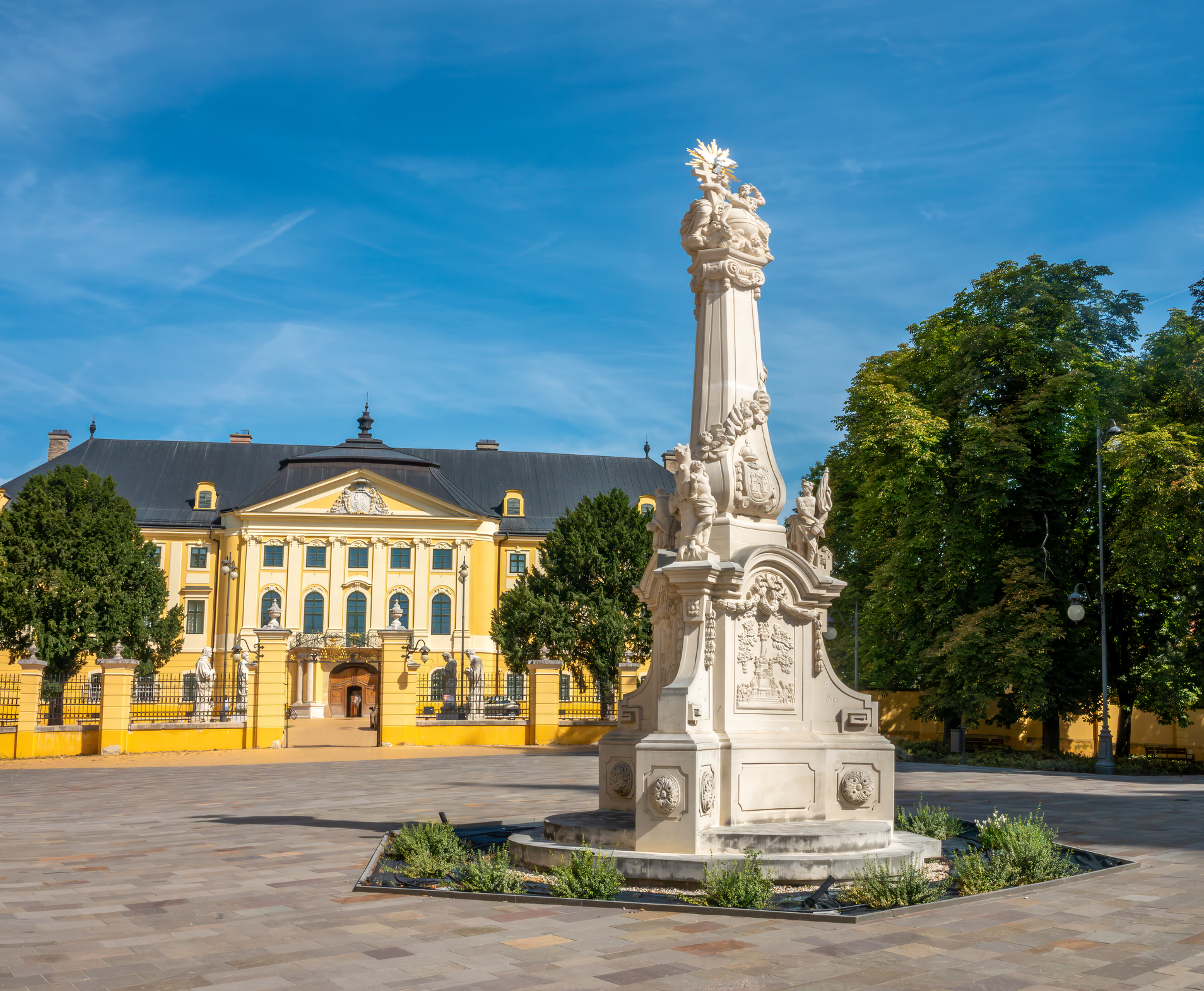 Day 18: 18:00-19:00
Day 18: 18:00-19:00Kalocsa / Hungary
-
 Day 19: 07:00
Day 19: 07:00Budapest / Hungary
the capital of Hungary, in the northern central part of the country; population 1,712,210 (2009). It was formed in 1873 by the union of the city of Buda on the right bank of the Danube River with the city of Pest on the left.
-
 Day 20: 09:00
Day 20: 09:00Budapest / Hungary
the capital of Hungary, in the northern central part of the country; population 1,712,210 (2009). It was formed in 1873 by the union of the city of Buda on the right bank of the Danube River with the city of Pest on the left.

